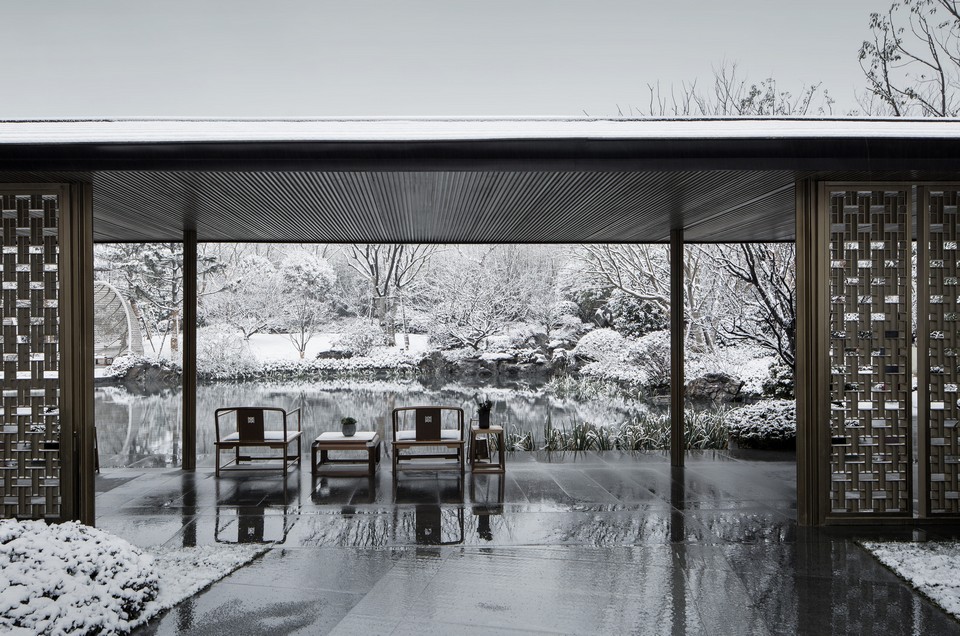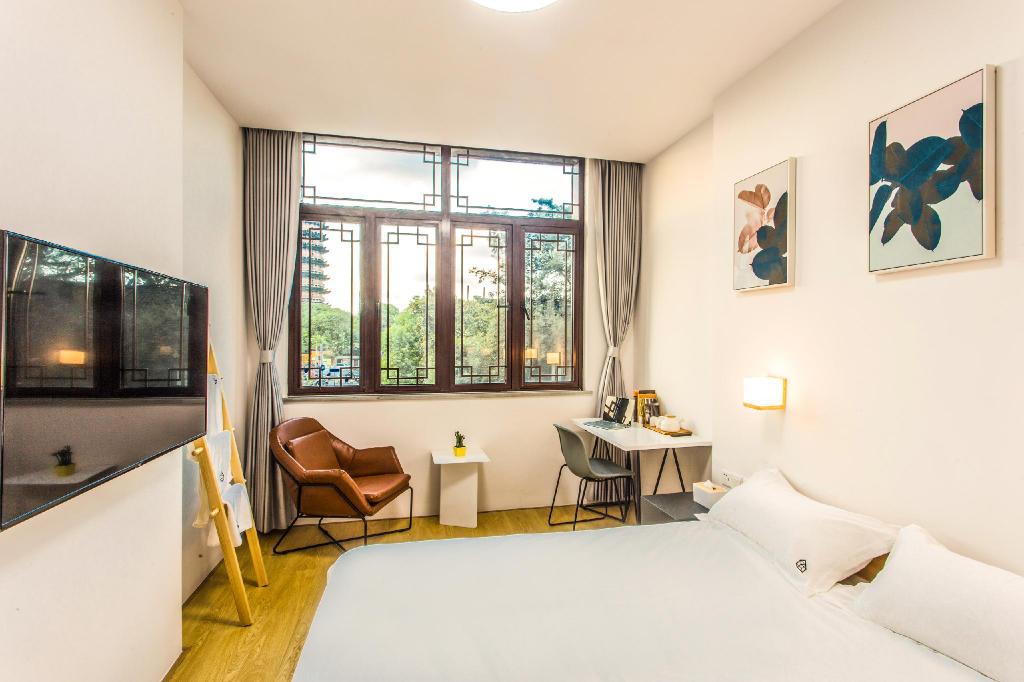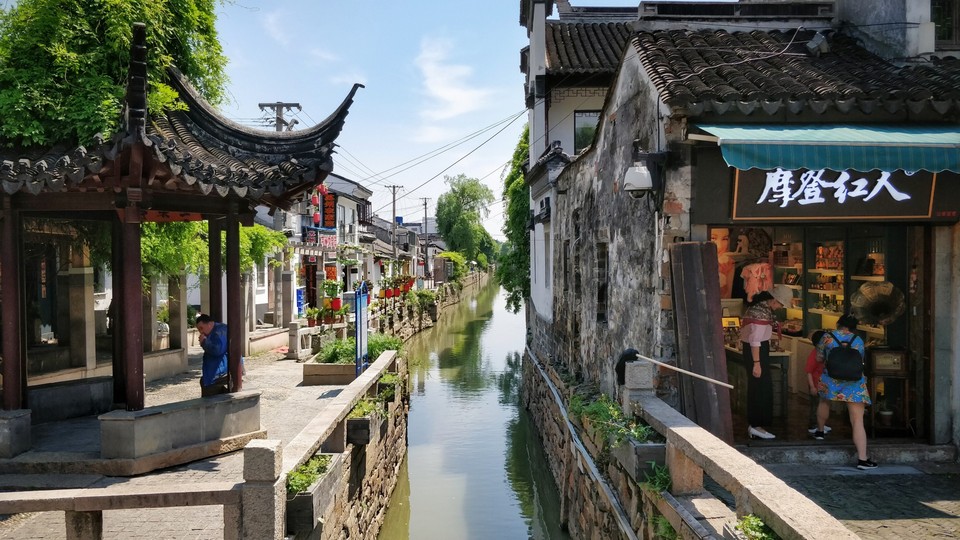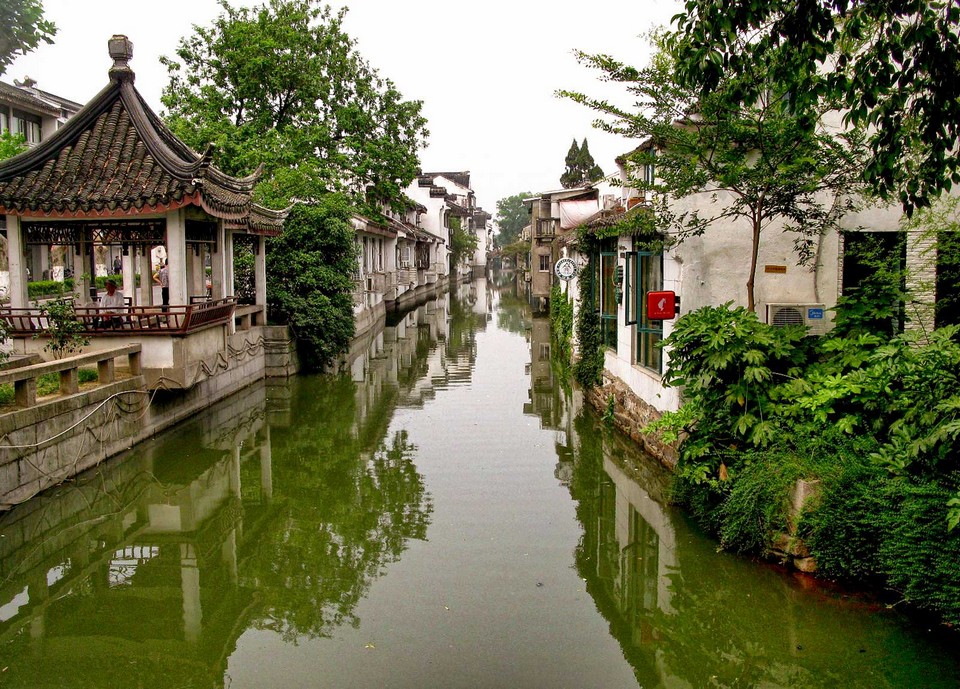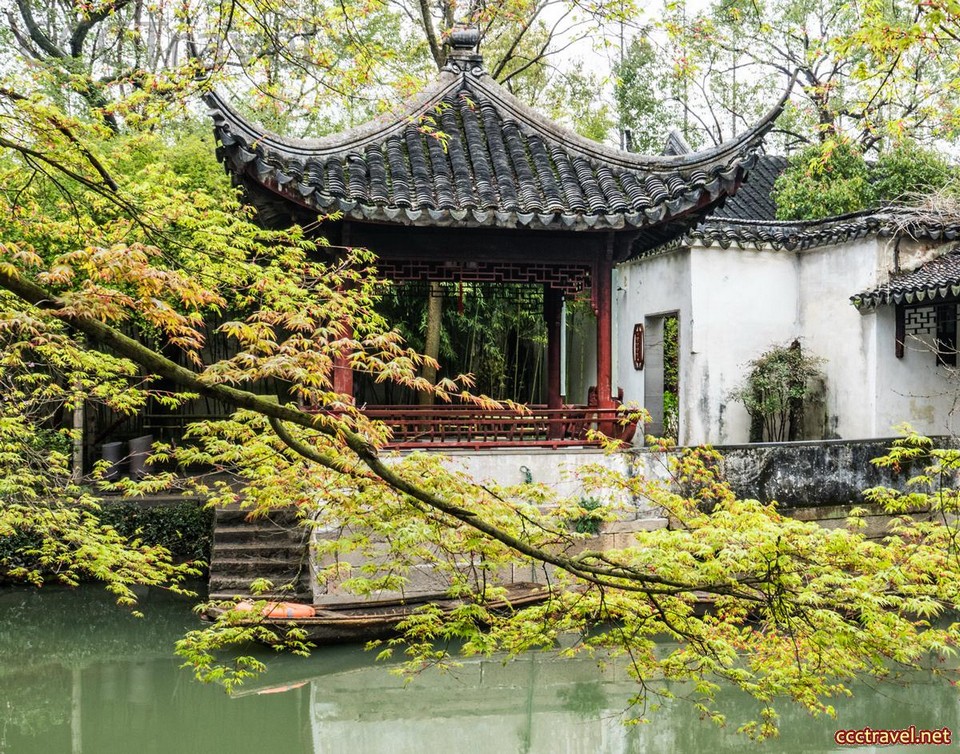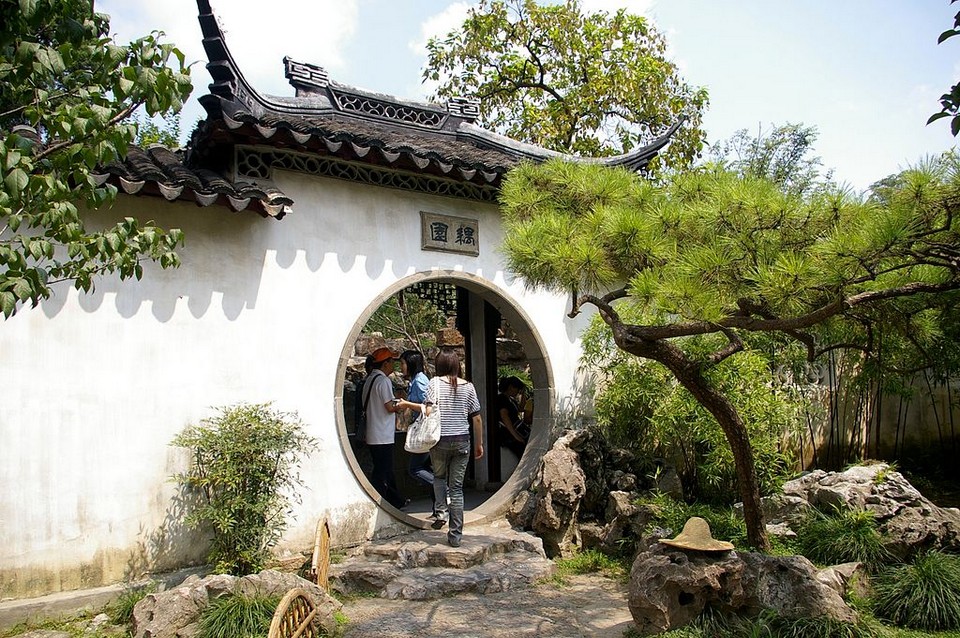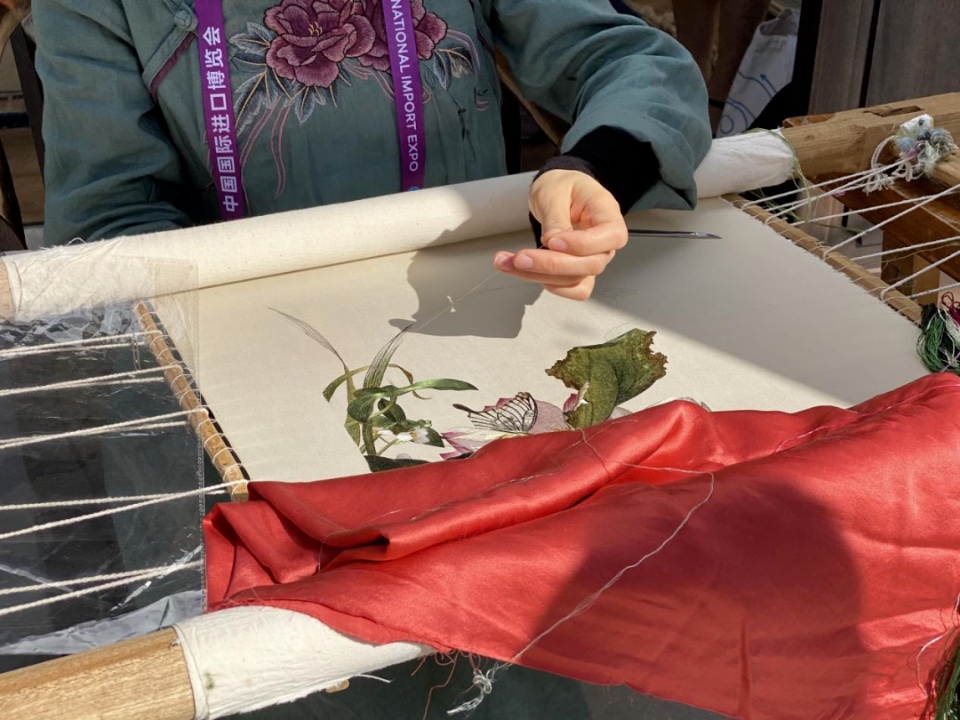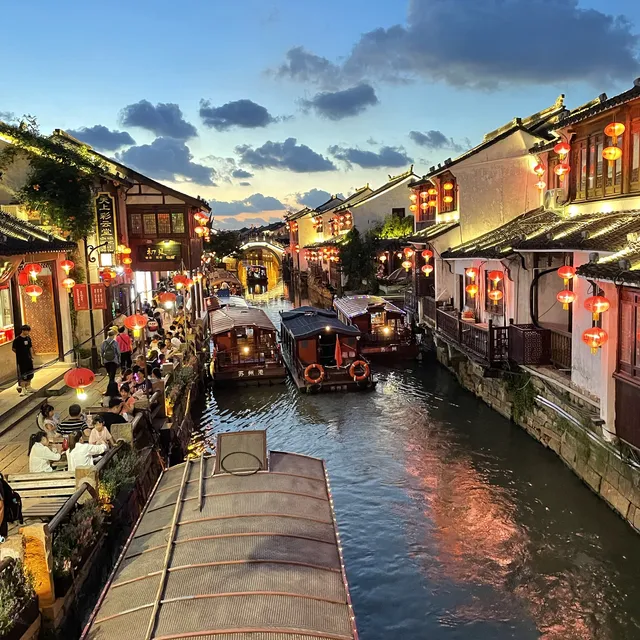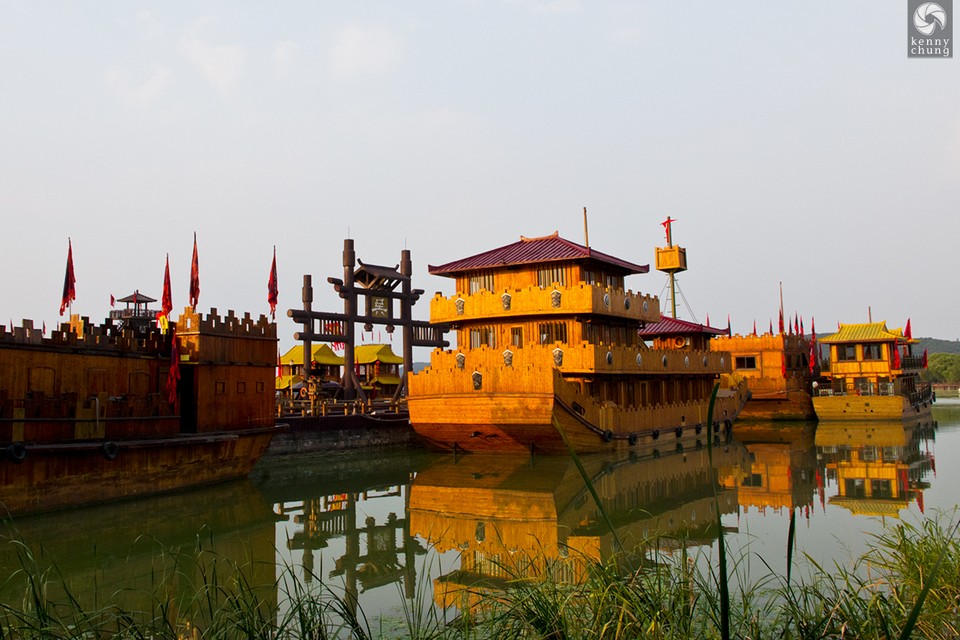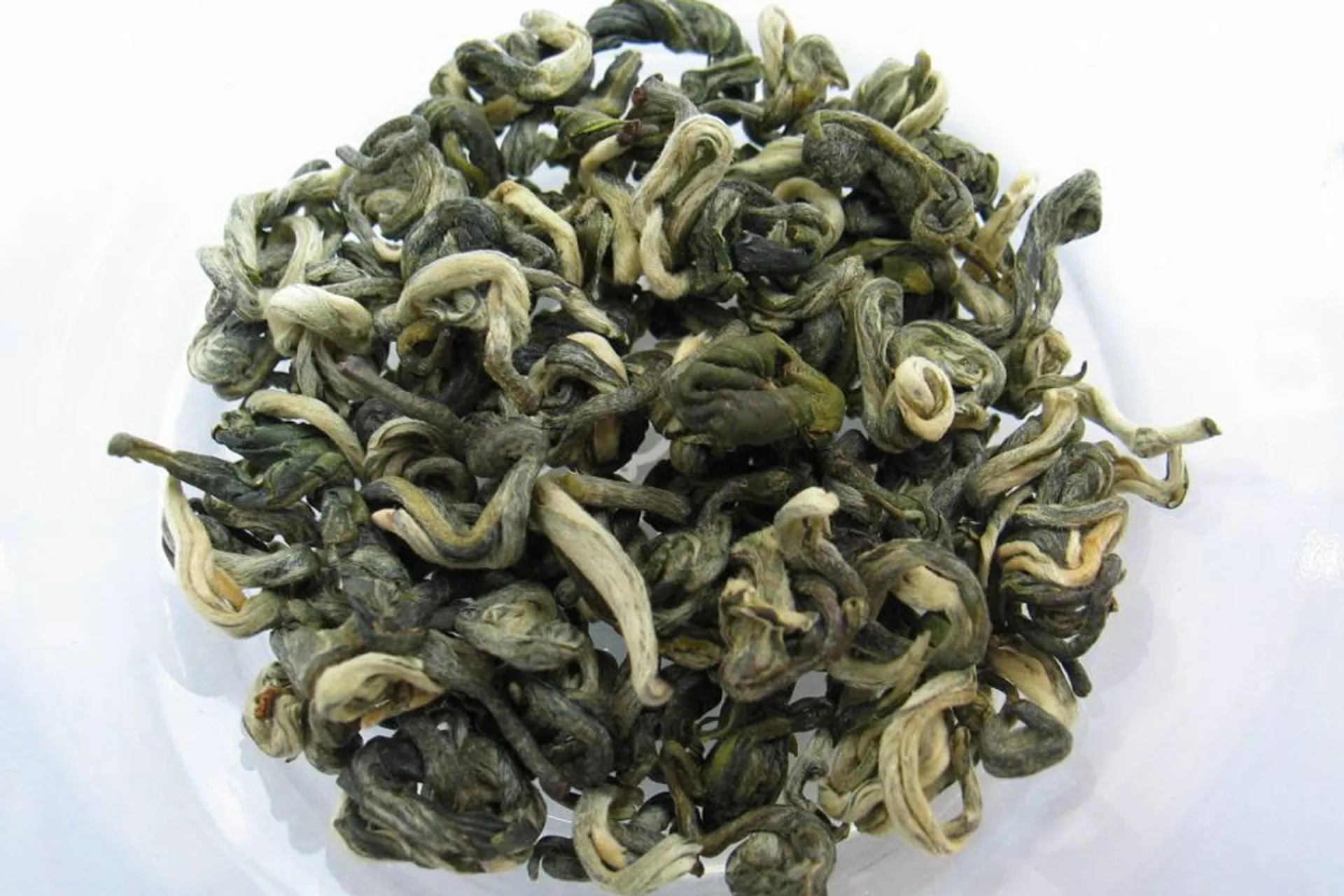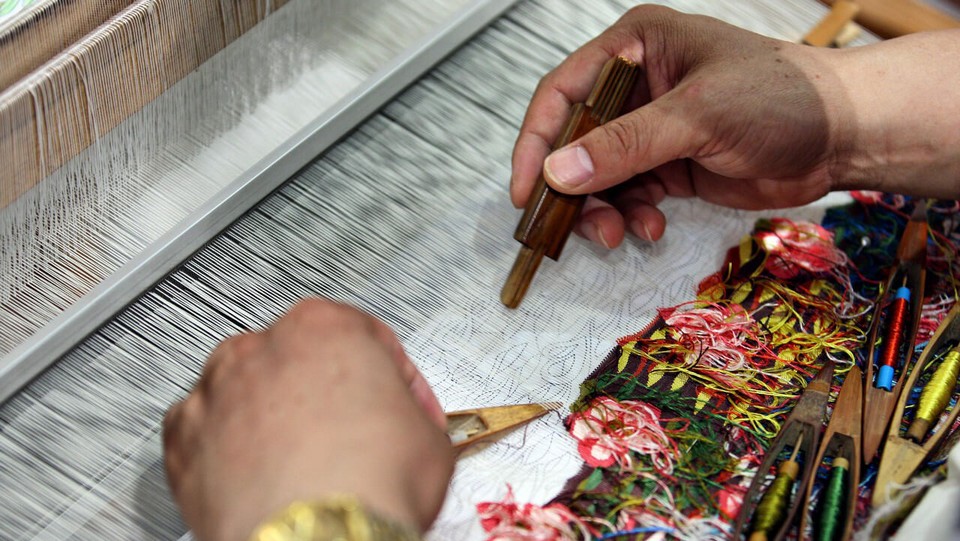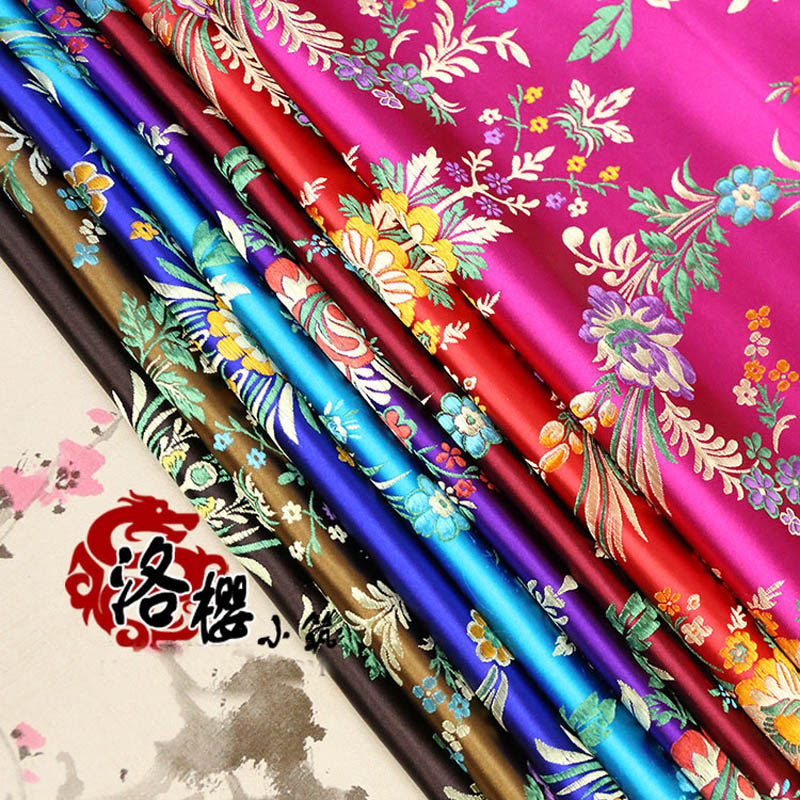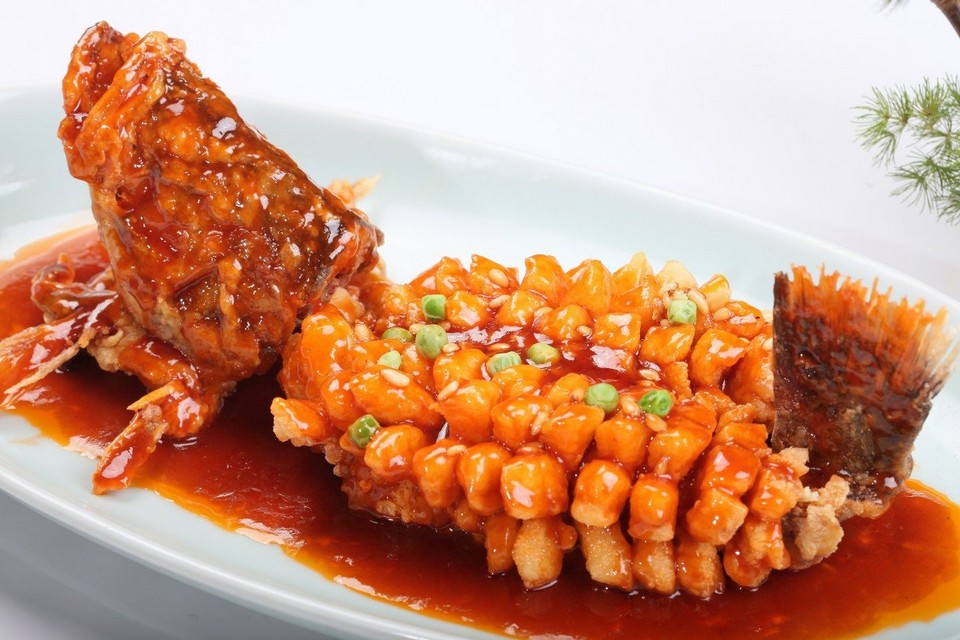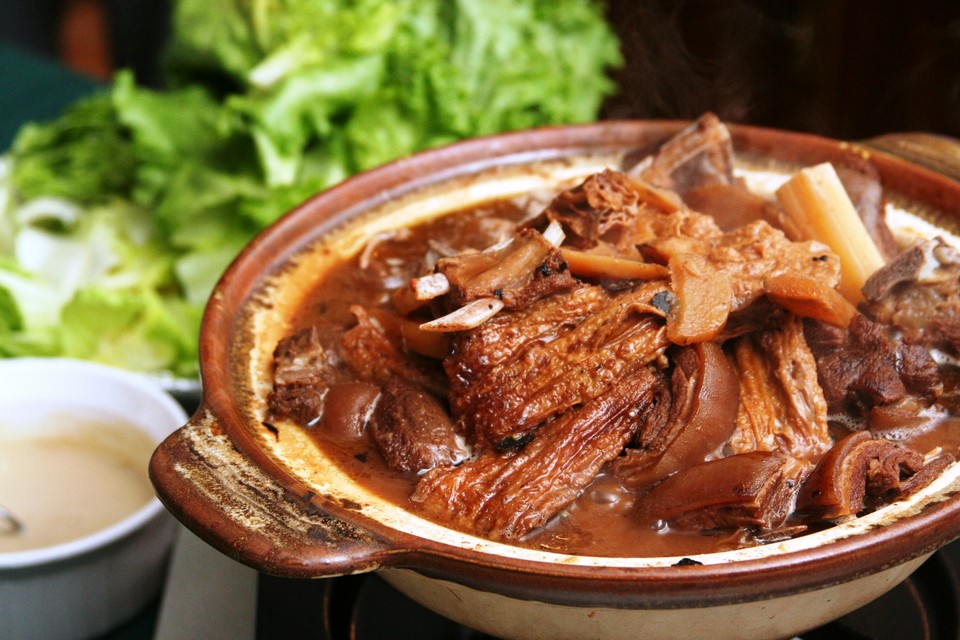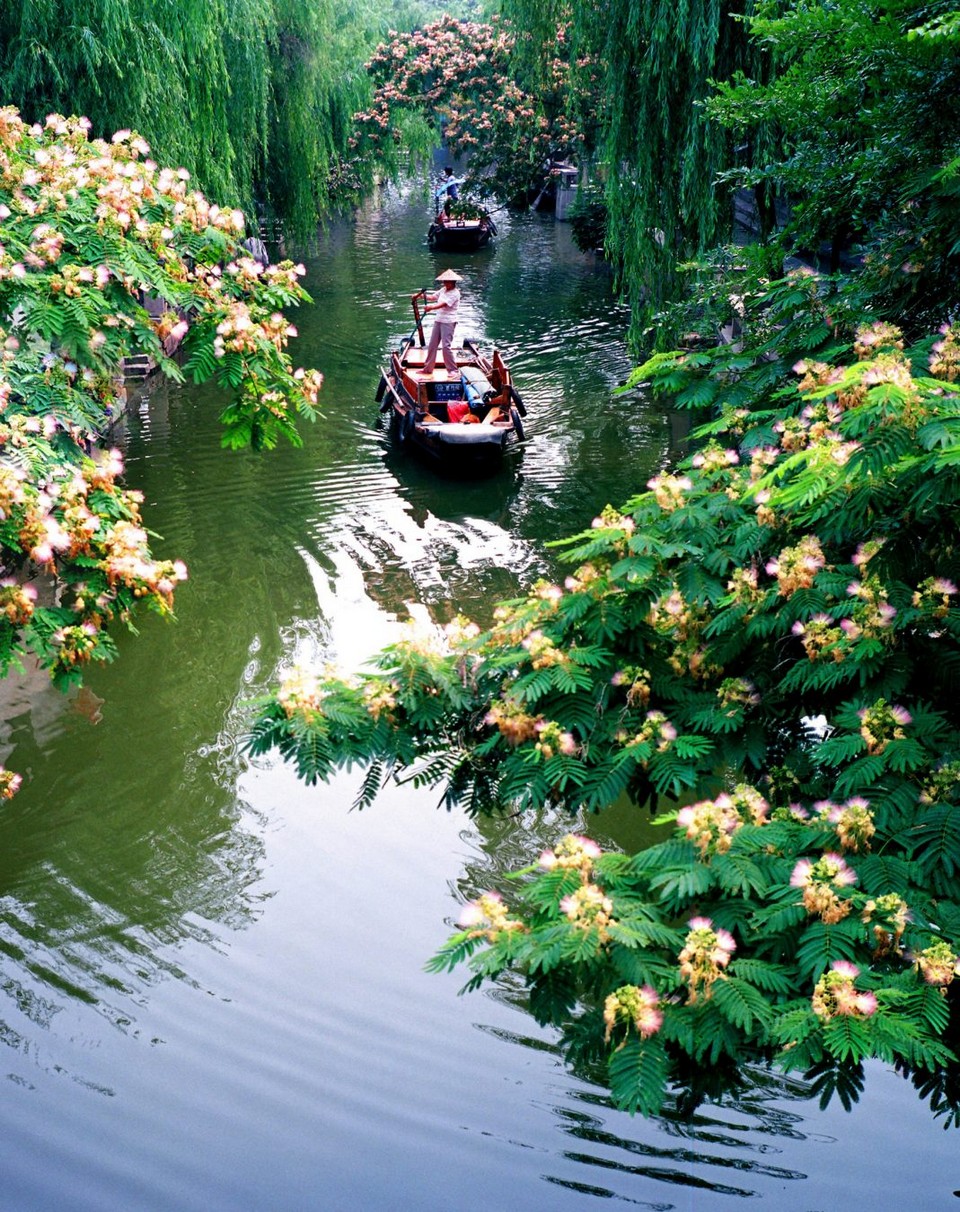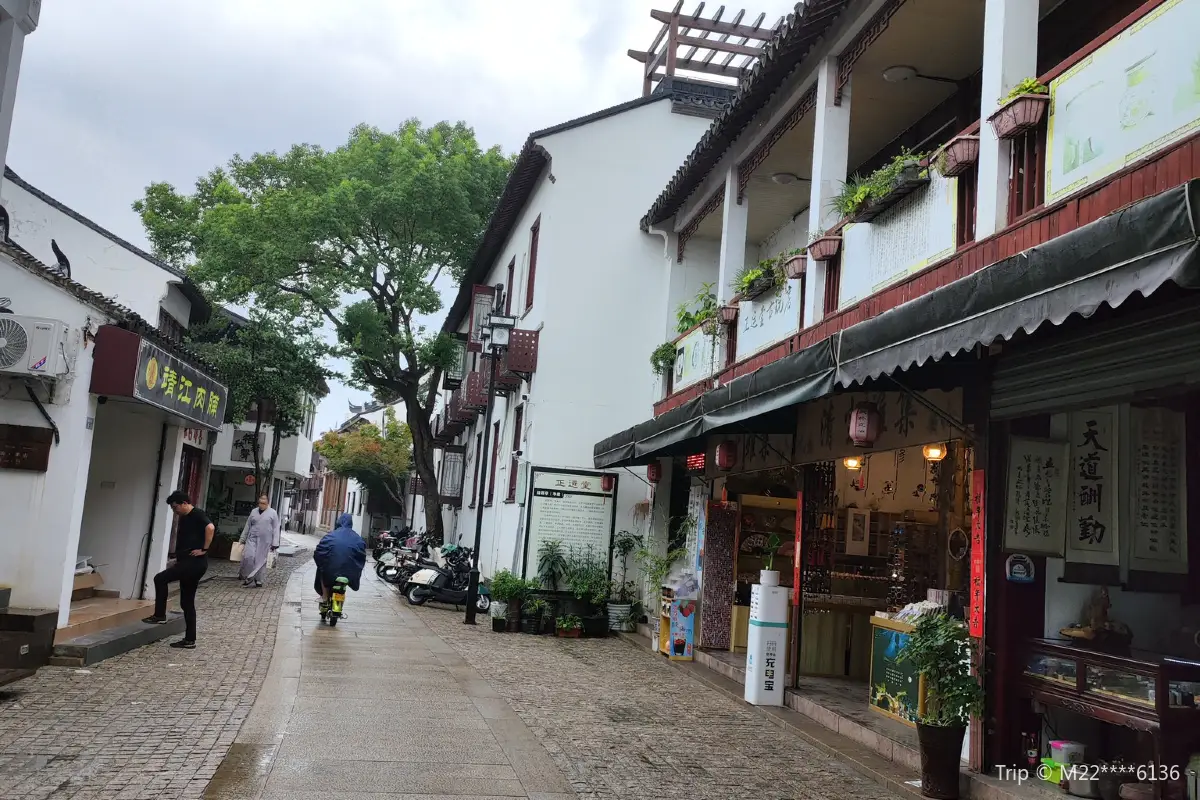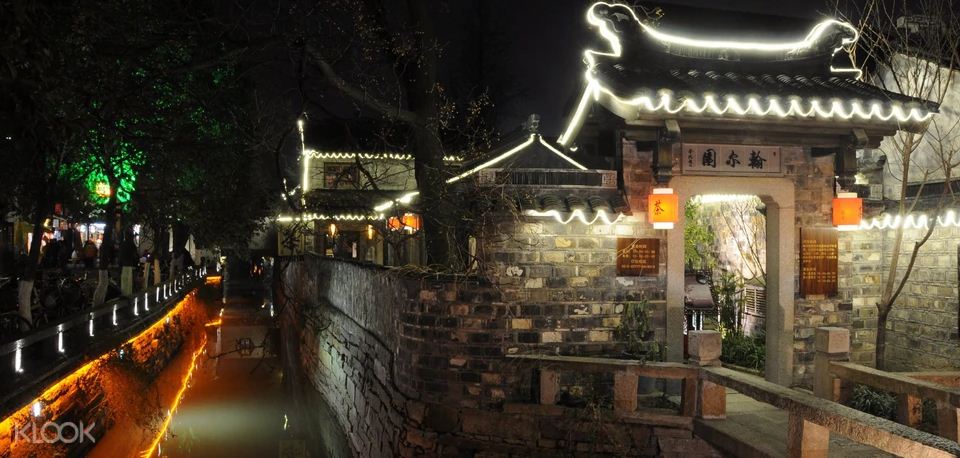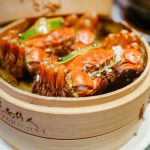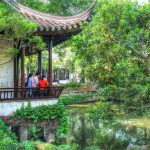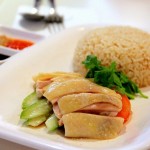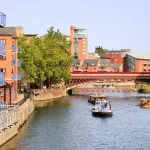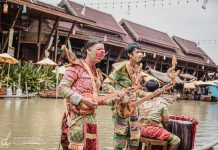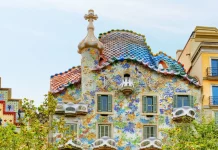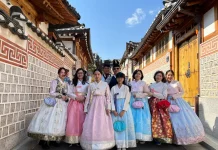Chinese people have a lot of nice words to describe the legendary beauty of the famous land of Suzhou such as: “Up above there is heaven, down below there is SuHang (Suzhou and Hangzhou)”, which means that the beauty of Suzhou and Hangzhou as beautiful as heaven. Dubbed the Venice of Asia with small canals running between rows of poetic ancient houses, Suzhou has long been an attractive destination of the land of Jiangnan (the south of China). Not only that, Suzhou is also the Cradle of art and culture of China because it possesses countless beautiful classical gardens (forest garden).
- Guide to Suzhou nightlife — 5+ what & best things to do in Suzhou at night
- Top things to do in Suzhou — 10+ fun, must & best things to do in Suzhou
- Where to visit in Suzhou? — 15+ top Suzhou attractions & best Suzhou places to visit
- Suzhou shopping guide — Top 15+ souvenirs & what to buy in Suzhou
- What to buy in Guangzhou? — 11+ best things to buy in Guangzhou & best shopping places in Guangzhou
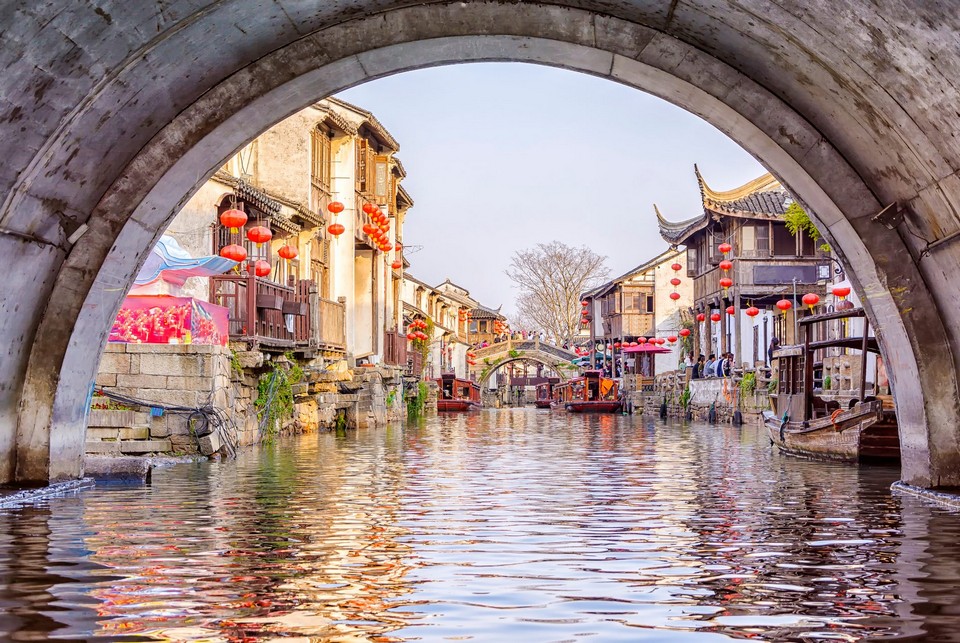
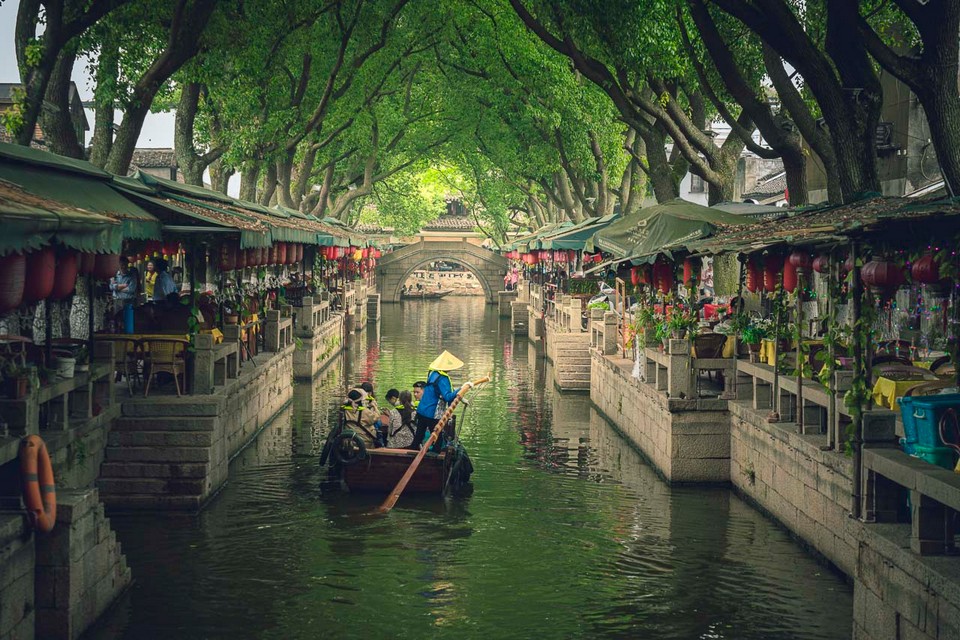
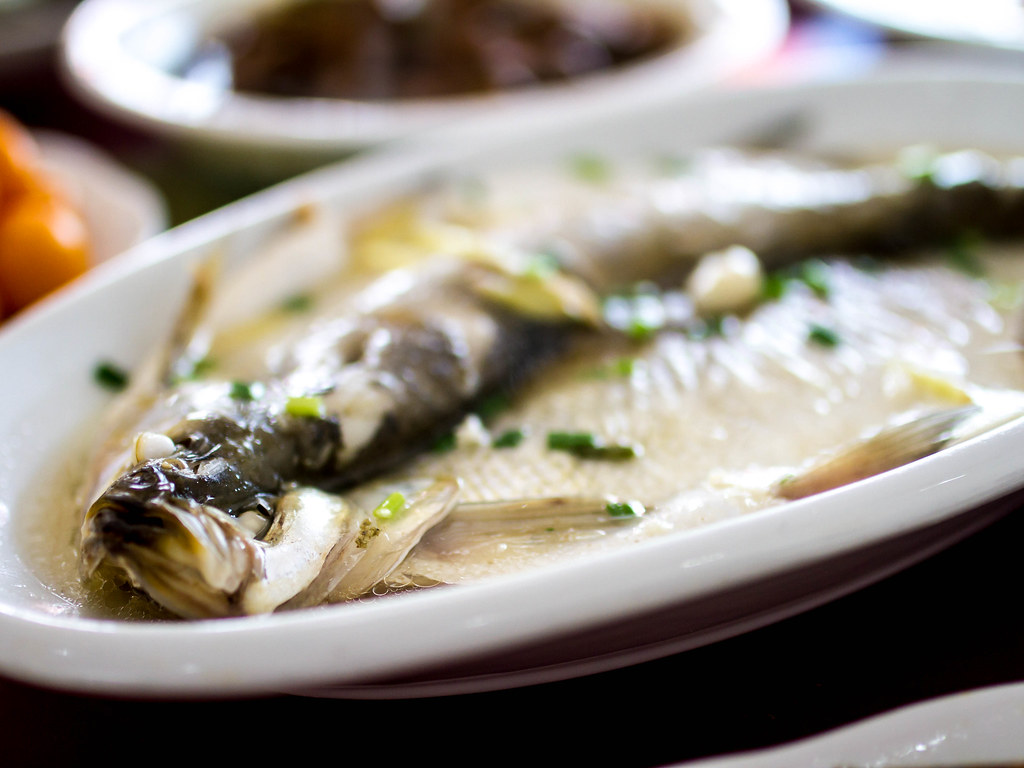
So, is Suzhou worth visiting, how to visit Suzhou, what to do in Suzhou and how to plan a budget trip to Suzhou for the first-time perfectly? Let’s check out our Suzhou travel blog (Suzhou blog) with the fullest Suzhou travel guide (guide to Suzhou, Suzhou tourist guide, Suzhou city guide, Suzhou guide) from how to get to Suzhou, best places to visit, best time to come, what to eat as well as top things to do in Suzhou and suggested Suzhou 2 days itinerary to help you maximize your trip as follows!
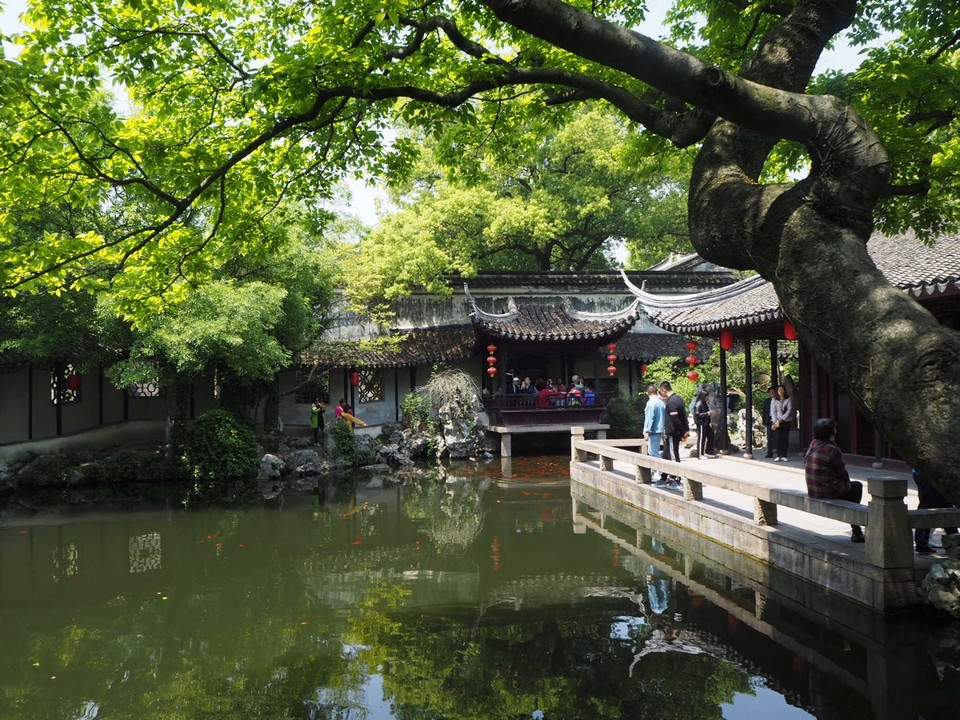
Suzhou is famous for its beautiful arched stone bridges, ancient Chinese-style temples and traditional gardens that are meticulously designed. Suzhou also used to be the center of silk production since the Song Dynasty.
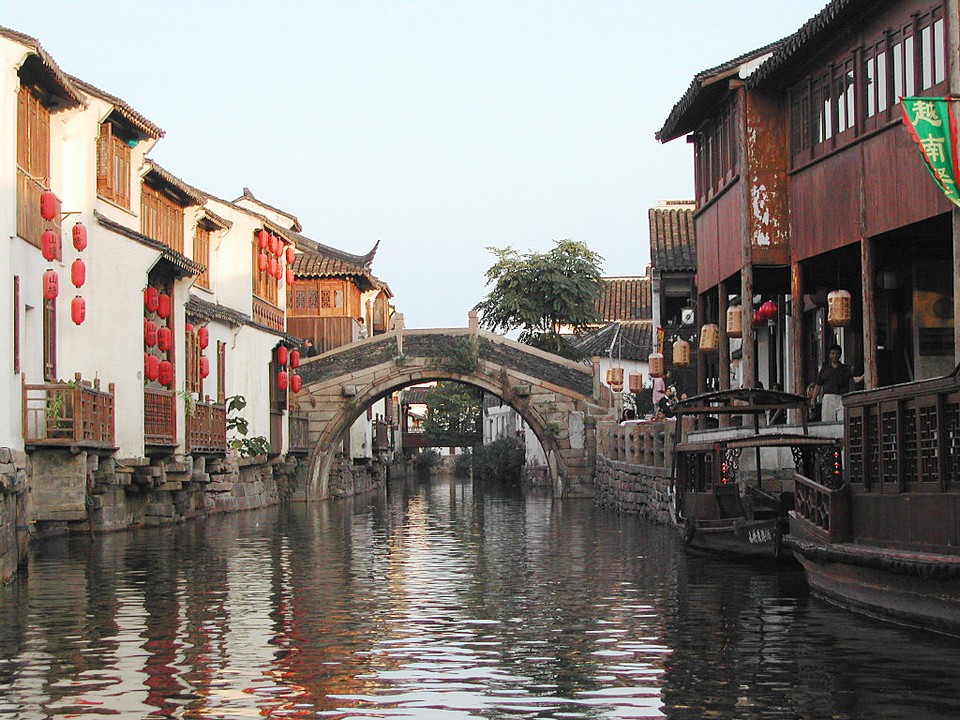
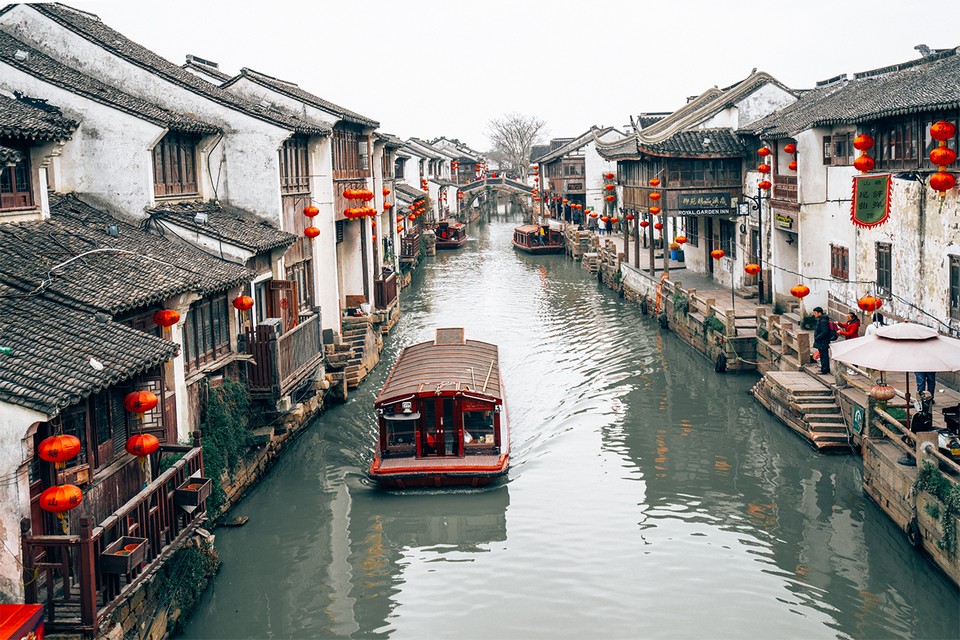
Suzhou travel blog: Overview of Suzhou
Suzhou has a long-standing history, located in the lower Yangtze River and on the bank of Lake Tai (or Lake Taihu) in Jiangsu province, China. Suzhou is 122km away from Shanghai and 240km away from Hangzhou. Because of the close to each other, travellers often combine these 3 destinations in one trip.
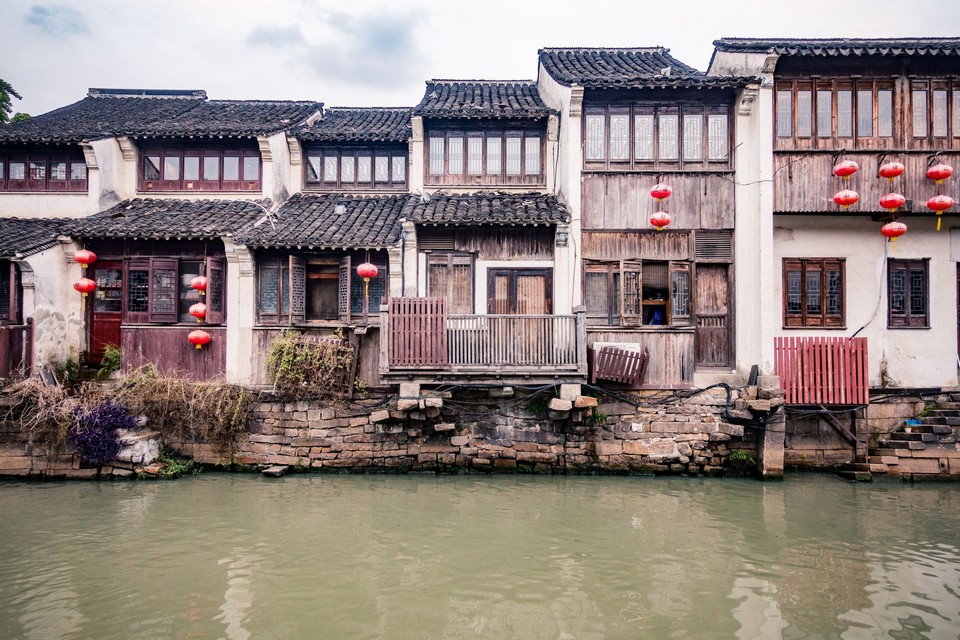
The beauty of Suzhou has long been an endless source of inspiration for poetry and music. Suzhou captivates visitors with its ancient, nostalgic beauty with ancient forest gardens, a maze system of canals and hundred-year-old stone bridges.
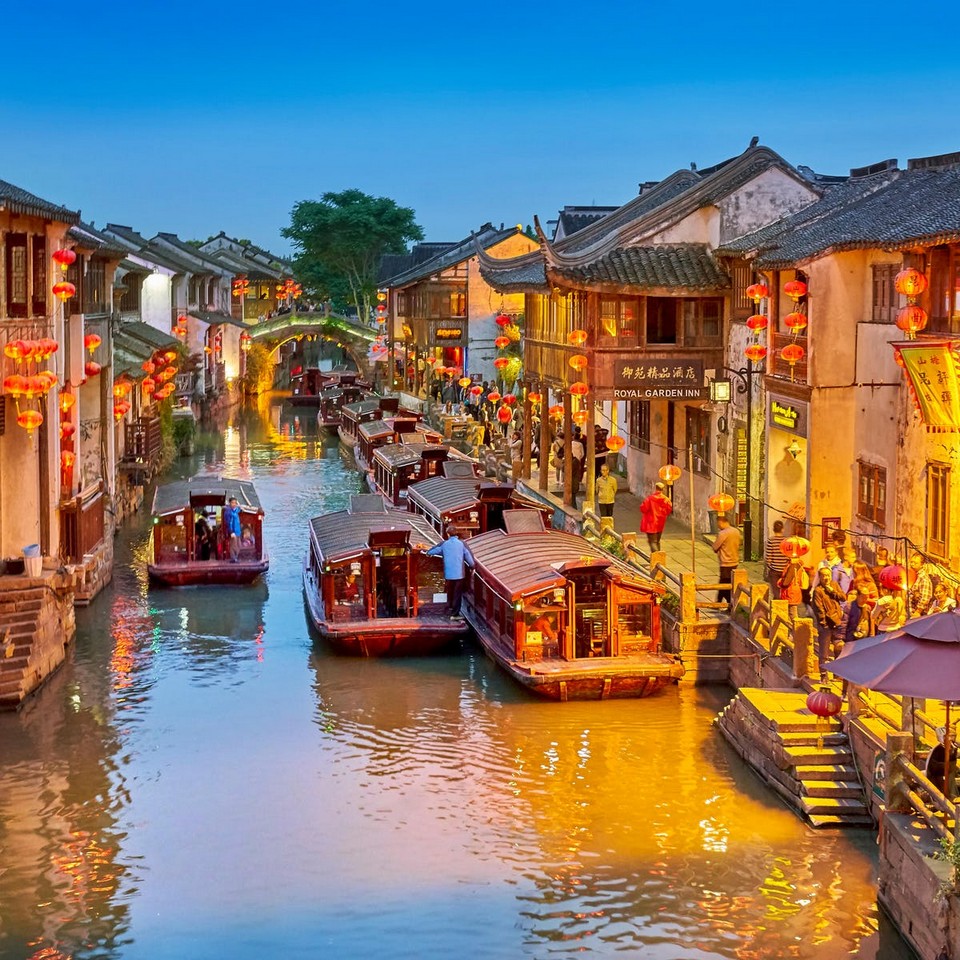
Life in Suzhou is crowded but not noisy, hustle and bustle but very peaceful. The rows of maple trees stand on the side of the road, willow trees hanging by the canals swaying as the wind blows, the curved gray roofs covered by moss, all the pieces that make up the gentle, charming of Suzhou today.
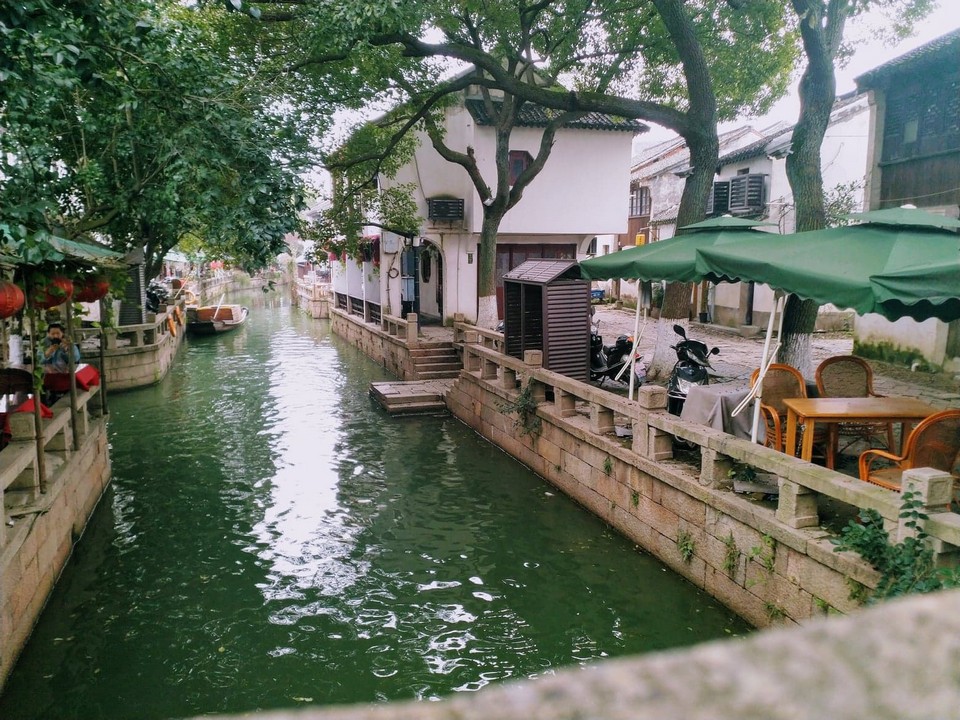
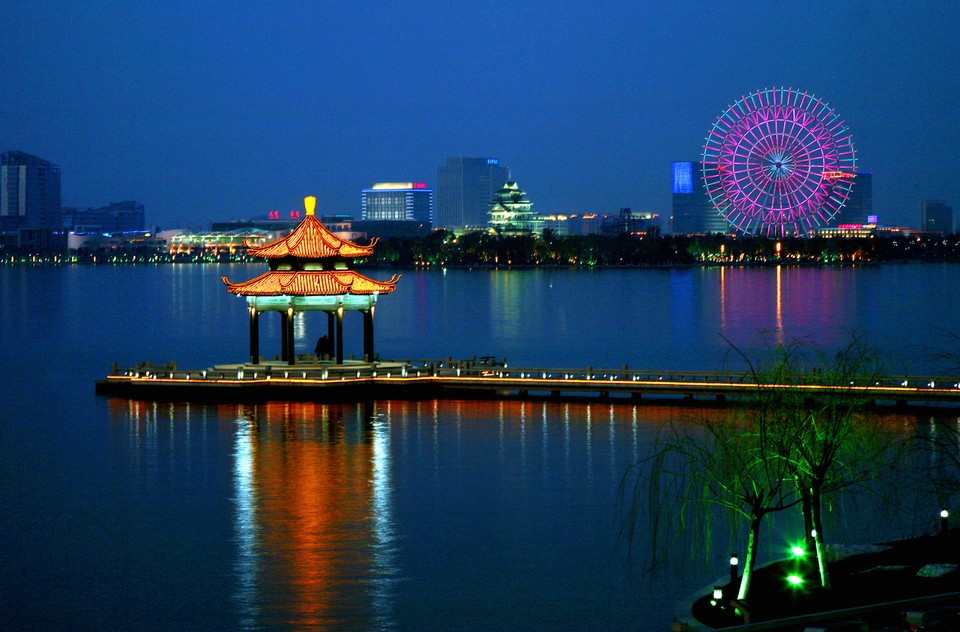
Suzhou travel blog: When to visit?
With a humid subtropical climate, Suzhou has four distinct seasons and each season has its own characteristics. You can visit Suzhou at anytime of year. But in my opinion, there are 2 good periods you should go:
Summer (late June – mid-July) or lotus season. In this period, the lotus will bloom in the ponds of gardens with lotus fragrance, creating a poetic scene bearing bold ancient style. However, the weather at this time will be very hot and crowded with tourists.

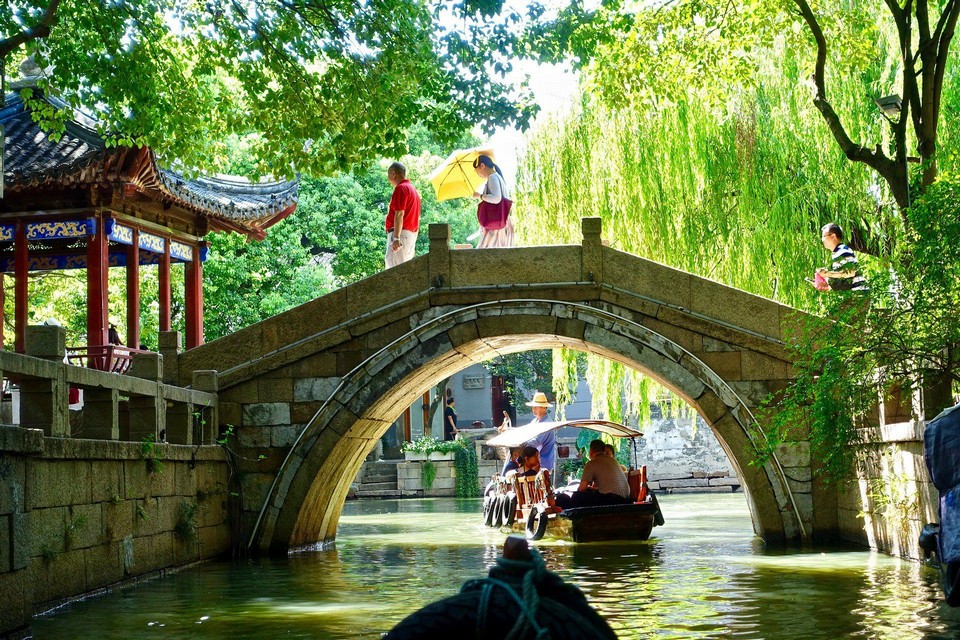
Autumn (mid-October – mid-November) with cool and pleasant weather (the temperature ranging from 17 – 22 degrees Celsius), the leaves start to turn yellow, creating a very poetic, nostalgic scene. I went in early November, although the weather was quite ideal, but there were little yellow leaves, and lotus leaves dying in the lakes in the gardens. So, the chance to see yellow leaves is quite rare, depends on your lucky.

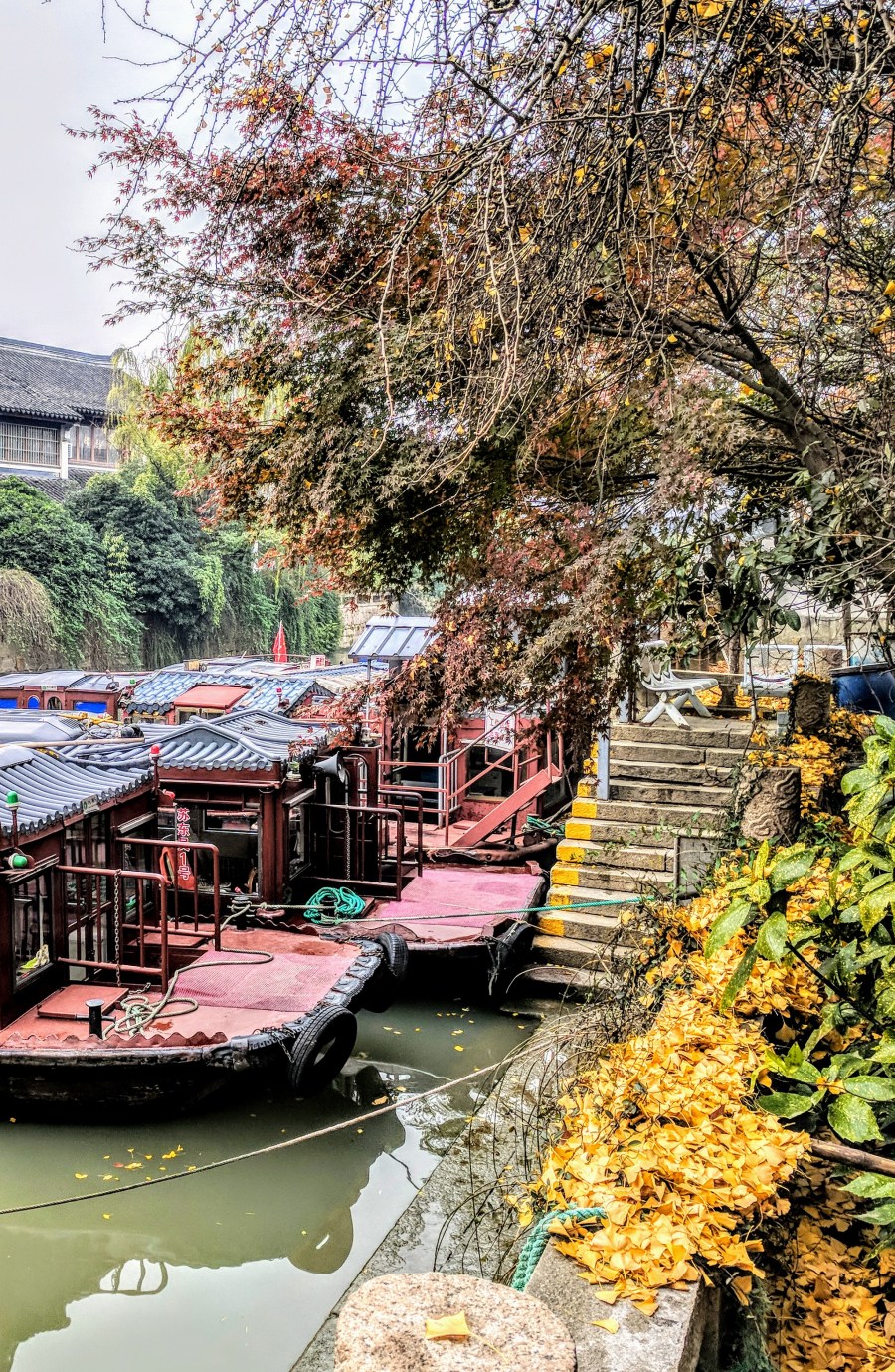

In addition, in the middle of October, there will be a very beautiful field of Imperata cylindrica “Red Baron” (red Cogon grass) in Suzhou Industrial Park, I also did not see them because I came in early November, so regret. In general, October is considered the most beautiful time to travel to Suzhou, this is autumn time with cool weather and beautiful scenery.
In addition, spring is also very good time to come because this is the time when you can also admire the beautiful scenery in spring with blooming flowers everywhere. Especially at the end of April and early May, the scenery of Suzhou is full of vitality with the most brilliant of flowers, buds, plants.
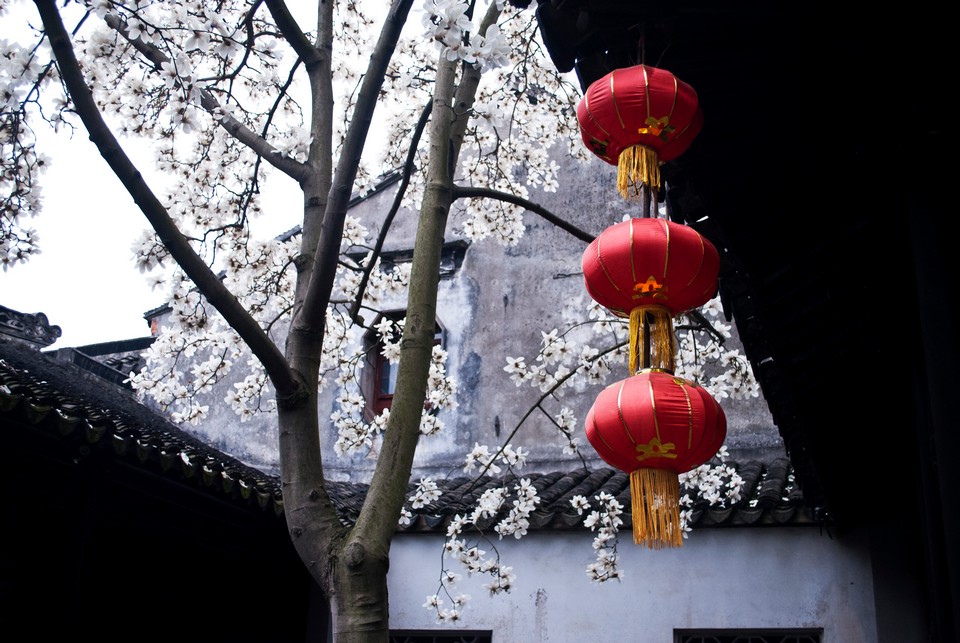
If you want to see snow fall in Suzhow, let come here in winter.
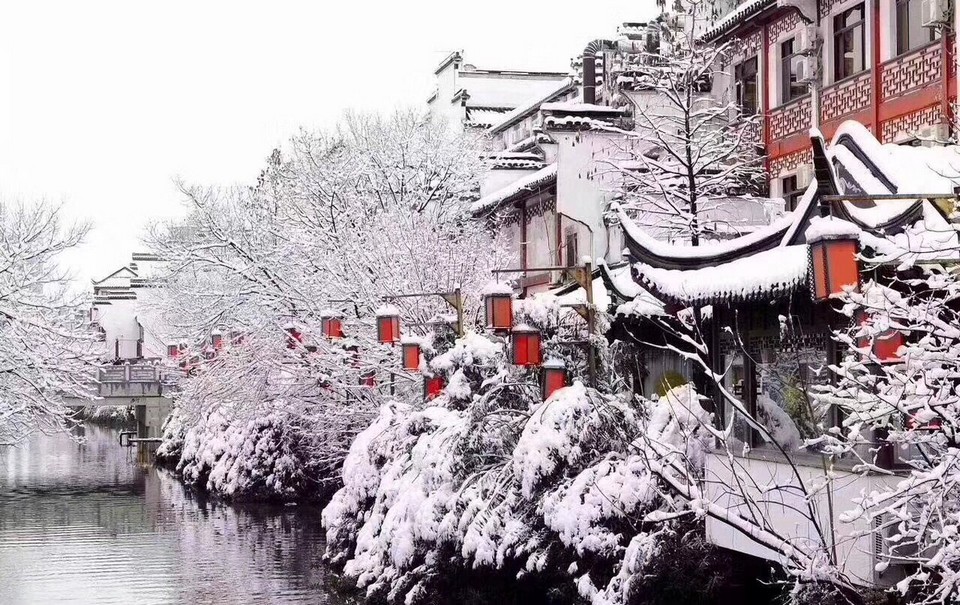
Tips
- Avoid traveling to Suzhou on major Chinese holidays such as Labor Day (International Workers’ Day) on May 1 and Independence Day on October 1. Because on these occasions Chinese tourists flock to tourist destinations are extremely crowded (even you will hard to find a spot to standing).
- Avoid traveling to Suzhou on weekends, because Suzhou is like other hot tourist destinations such as Dalat or Sapa, Hoian in Vietnam, it also is a weekend destination for Chinese people. So, every weekend, tourists flock here. Although, it was not a special occasion, but I saw visitors also flocked very crowded on Shantang Street of Suzhou.
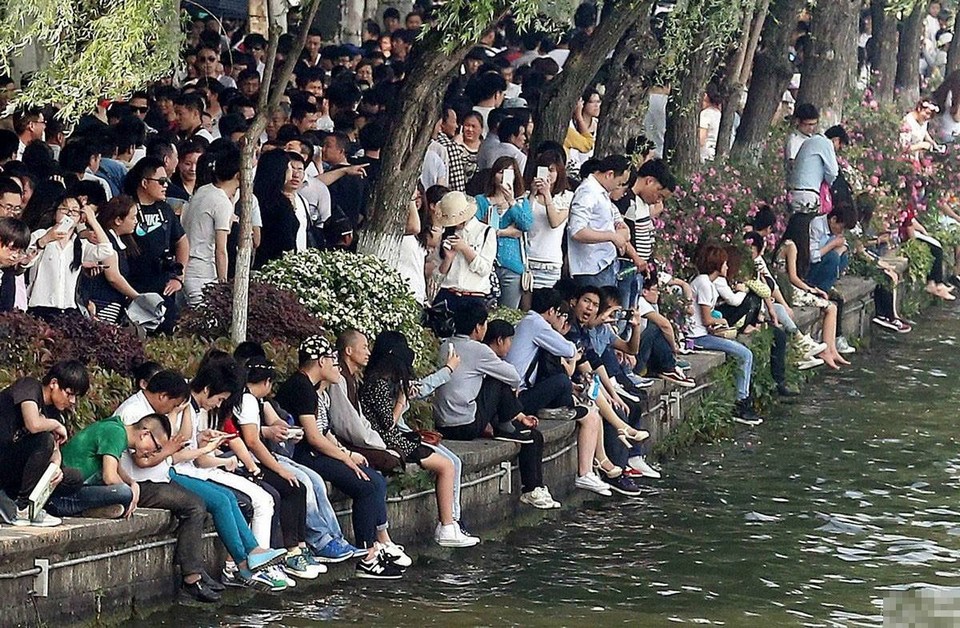
Suzhou blog: How to get to Suzhou?
Currently there is no airport in Suzhou, so if you want to get to Suzhou, you will have to fly to another city and then going to Suzhou from there. The most popular option is to go from Shanghai.
From Shanghai you can go to Suzhou by different means of transportation, but the most convenient is still to take a train. The train to Suzhou from Shanghai will depart from two stations: Shanghai and Shanghai Hongqiao Railway Station. You should choose to depart from Shanghai Station because it is closer to the city center. One-way ticket price from 31 – 39.5 yuan depending on time.
Besides taking the train you also can take a bus which costs CNY40-50 and traveling time about 1 hour and a half. Also taxi at high price of CNY400-500, traveling time similar traveling by bus.

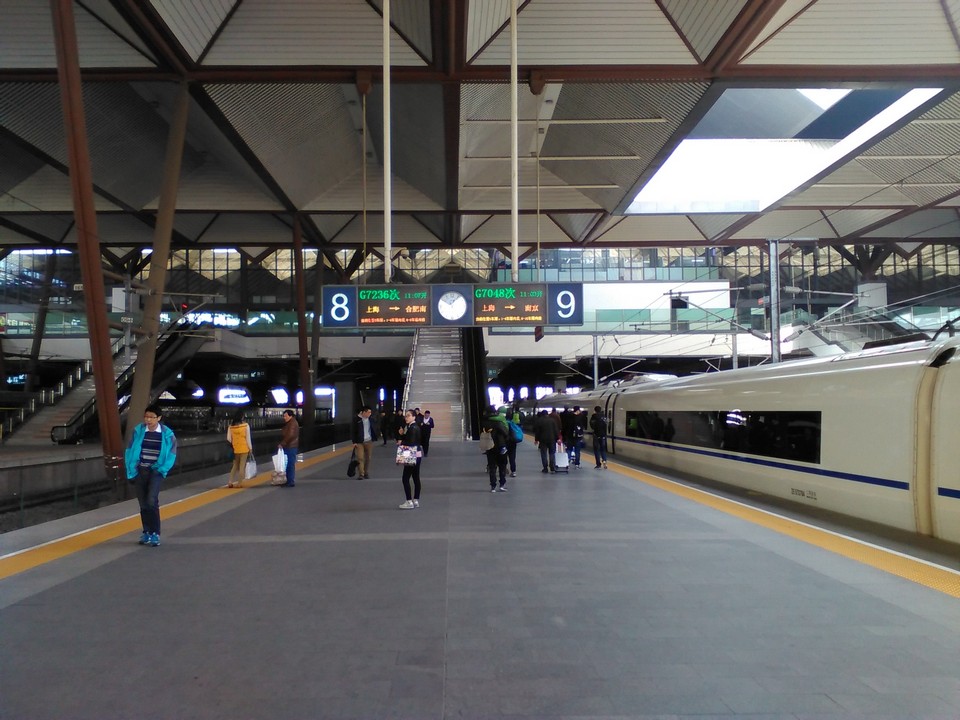
You should buy tickets in advance through Klook to avoid queuing here.
I have a friend in Shanghai, so take advantage of weekend, he took me to Suzhou by his private car. Compared to the 30-minute train ride, traveling by car will take longer, it takes about 2 hours of traveling. On the way, when reaching the check point, you will have to stop for the police to check your papers.
Suzhou travel guide: Getting around Suzhou
Bus: Suitable for travelers because it’s very convenient. Traveling by bus you can freely to enjoy and sightseeing the scenes of Suzhou. Prices are around 2-5 yuan for each trip, usually these buses go through the train stations.
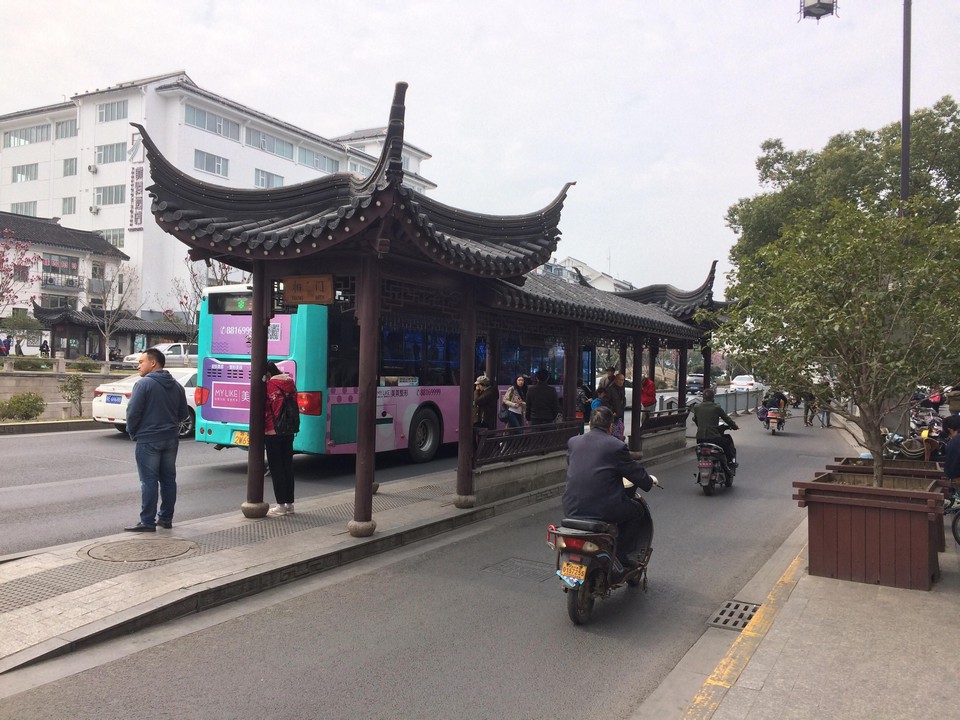
In Suzhou, you also can walking to visit several nearby attractions such as Humble Administrator’s Garden (Zhuozheng Yuan) or Lingering Garden. But for some futher attractions I recommend you should take a taxi.
Subway: In addition, there is also a subway system in Suzhou that connects points in the city. But according to my self-sufficient Suzhou travel experience, if you just want to visit main attractions, it is not necessary.
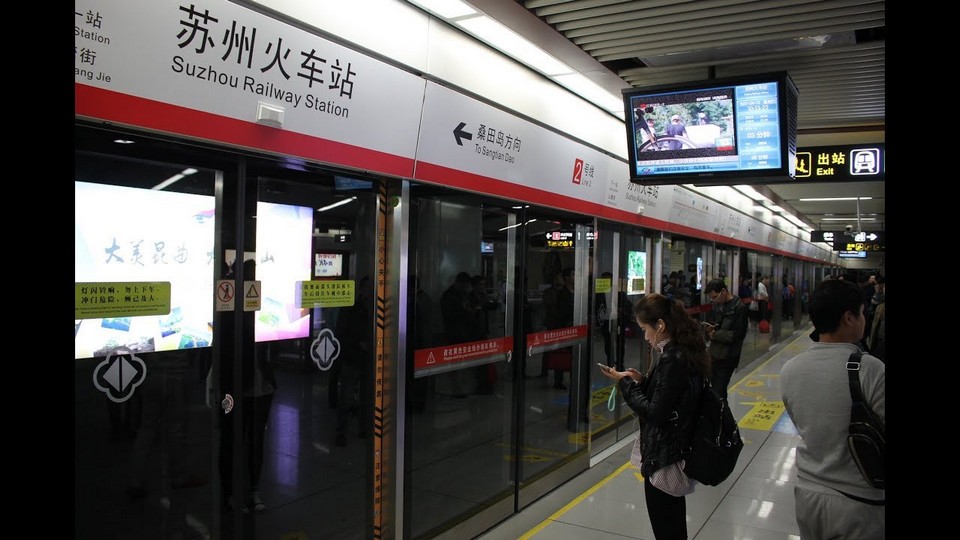

Suzhou travel blog: Where to stay?
Normally, tourists usually make their day trip to Suzhou and back to Shanghai at the end of the day, but since we just arrived in China the day before, we chose to stay overnight.
If you plan to stay overnight, you should stay around Shantang or Northeast (Dongbei) walking streets. At night, Shantang street will be very bustling and vibrant like the scene in some Chinese historical movies.
For one overnight in Suzhou, I stayed at Together – Venue Fawn Hostel Suzhou. A hostel for young people, is chosen by many backpackers, very cool with prime location, right near the subway station with a little walk to reach Lingering Garden. Overall, I rated this hostel 9/10! Room rate at 34 yuan/night.
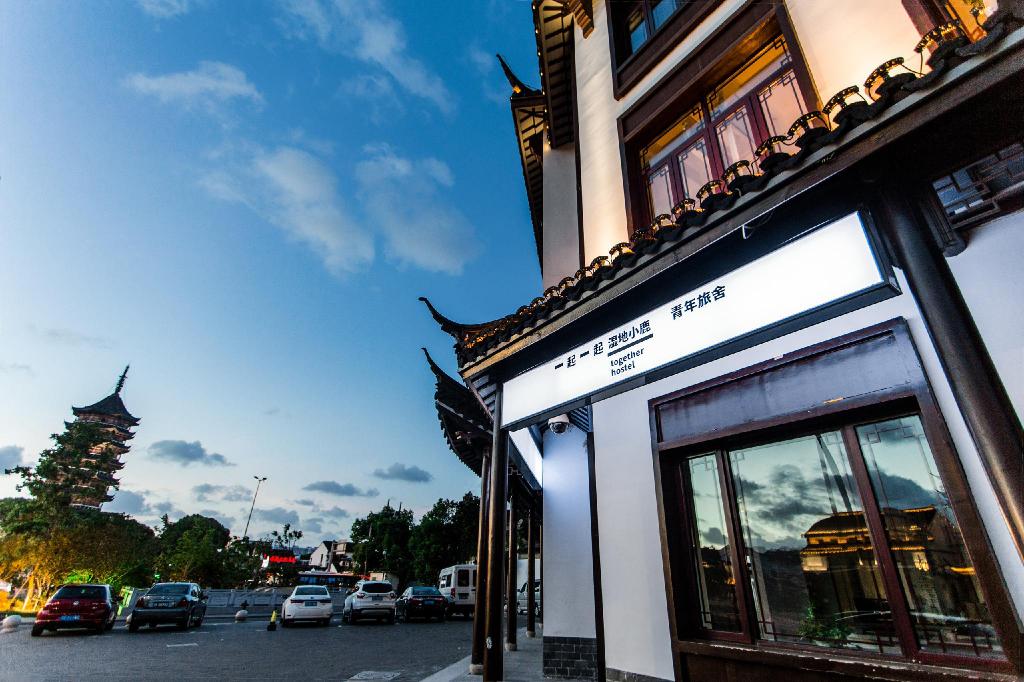
Note
- Not all hotels in China are allowed to welcome foreign guests, please note when booking.
- Hotels that are allowed to accept foreign guests in Suzhou will check-in international guests by facial recognition system (also in Shanghai and but not yet in Beijing).
Below we recommend more best budget, mid-range and upscale hotels with good ratings and reviews you can refer to.
- Shangri-La Hotel Suzhou (Agoda.com or Booking.com)
- Kempinski Hotel Suzhou (Agoda.com or Booking.com)
- InterContinental Suzhou (Agoda.com or Booking.com)
- Shangri-La Hotel, Suzhou Yuanqu (Agoda.com or Booking.com)
- Renaissance Suzhou Hotel (Agoda.com or Booking.com)

Find out more the top rating hotels in Suzhou on Agoda.com or Booking.com.
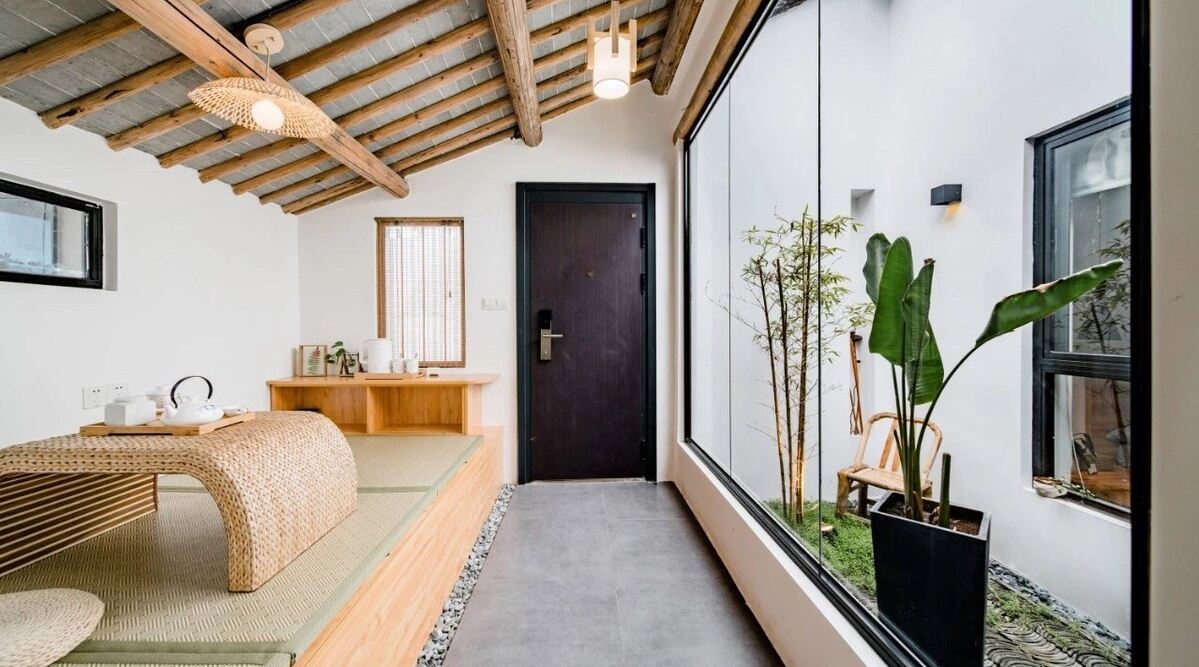
Suzhou blog: What to do and where to go?
Pingjiang Historic District
Suzhou has always been proud of its intertwined canals, especially in the Pingjiang District which is a former district of Suzhou, dating back to the Song dynasty. It has about 7 canals running in the north to south direction and 14 canals in the east to the west direction along with 18 beautiful arch stone bridges over these canals.

Because of being extremely famous for its intertwining and intersecting canal system, Suzhou is compared to Venice of China. Sitting on a boat to relax and drop your soul freely along the romantic canals and observing people passby is a wonderful experience like no other. The canal water here is green, flowing through small canals that are embanked with solid stones and large enough to allow the boat easily navigate.
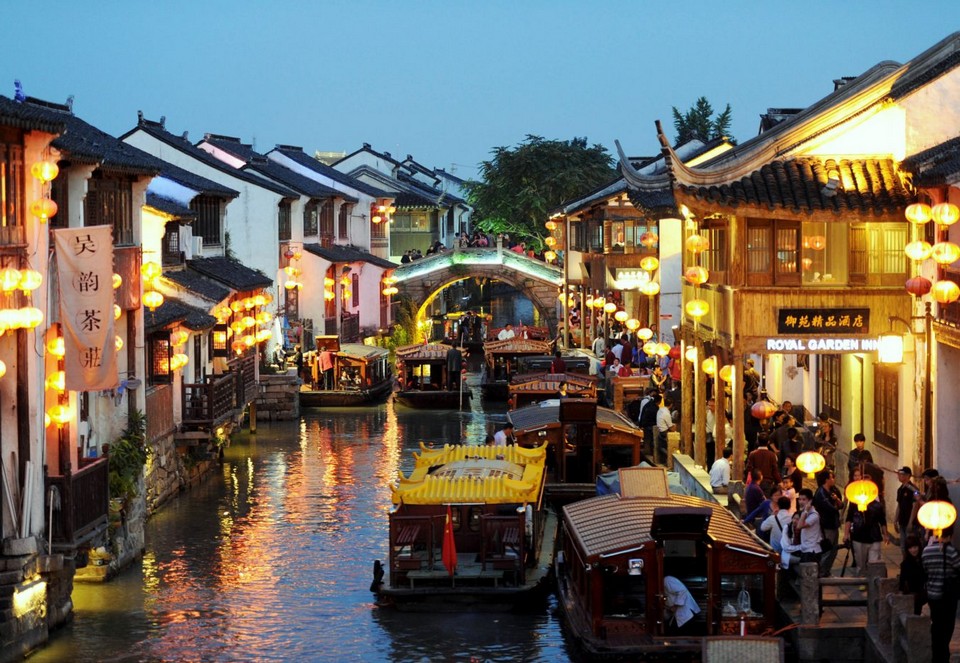
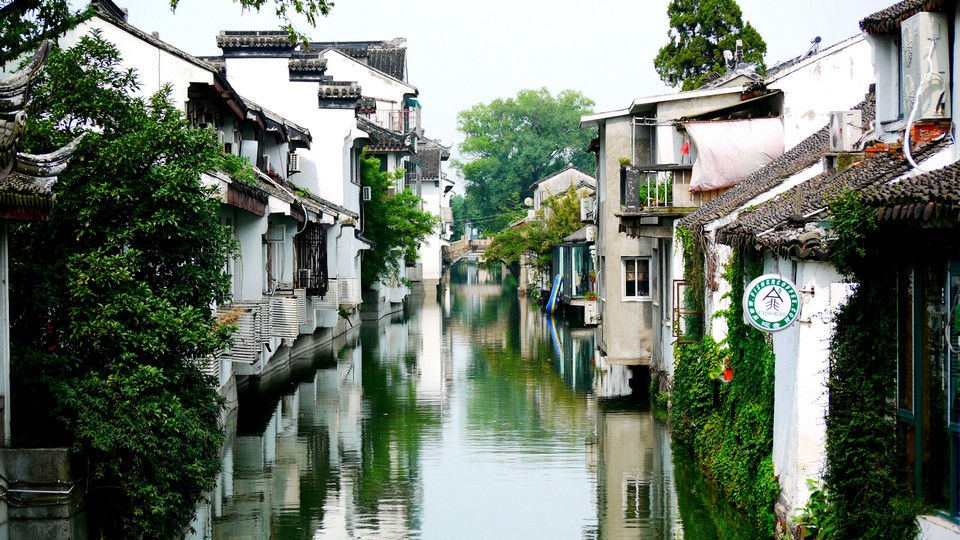
Stone bridges
Ancient and old stone bridges span the lovely canals in Suzhou as a highlight and adorn its beauty and has more than 18 arch stones brigde cross the canals. If you walking along the canals, you will see so many stone bridges that you cannot count how many bridges and even remember their names without paying attention. Each stone bridge has its own unique architecture with all of shapes: the tall one, the big one, the small one, the high slope one, but most of them share a common thing: an art and poetic arch shape. Each bridge holds unforgettable memories of local couples as this is a familiar romantic date spot every time the moon rises.

Especially at night, along the two sides of the canals are decorated with bright lanterns shining down on the canal surface, creating a beautiful and magical scene like in a historical movie. Life here is quite crowded, bustling, but not noisy, hustle and bustle but has its own order.
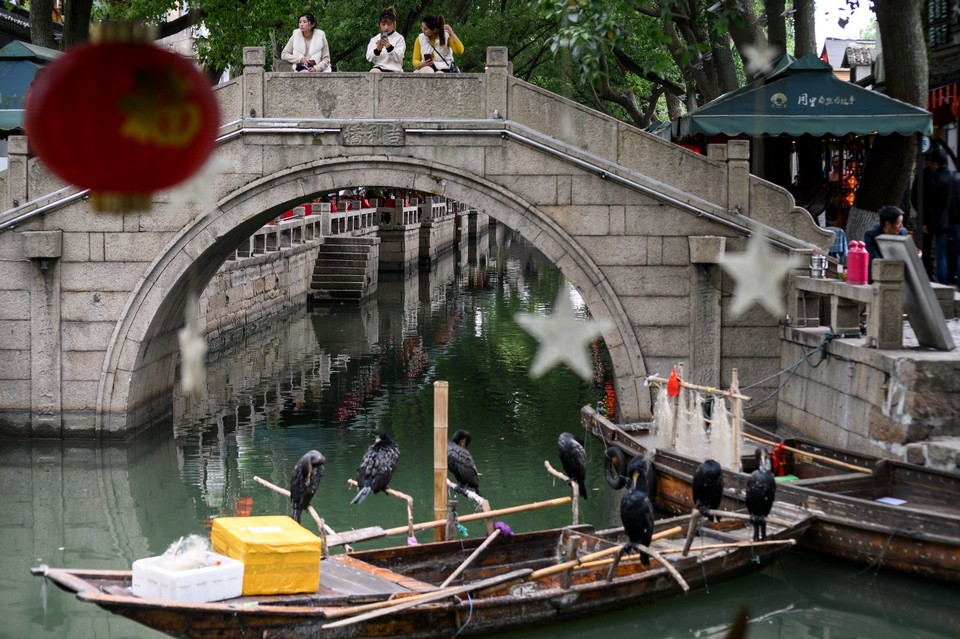
Ancient town
It can be said that the ancient town in Suzhou is not too different from the other ancient towns of China, but if chosen, many tourists still want to go to Suzhou the most because this is a poetic land with grey roof tiles, white walls of ancient houses located along the charming canals, slowing pace of life, narrow and roughly cobblestone roads with few passing vehicles evoke the peaceful atmosphere in the old town with many old features.

Chinese gardens
Suzhou is not only famous for its Pingjiang canal system, gentle curving bridges like silk over the rivers or an old town with full of poetic features, but also known as the land of Chinese classical gardens. As a city not very large in both size and scale, but Suzhou owns more than 200 large and small gardens which were built through the centuries, many dynasties with 9 gardens recognized by UNESCO as World Cultural Heritage Sites which should be preserved such as The Lingering Garden (Liu Yuan), The Master of the Nets Garden (Wangshi Yuan), The Mountain Villa with Embracing Beauty (Huanxiu Shanzhuang), The Lion Grove Garden (Shi Zi Lin Yuan). Suzhou is named by tourists as the “kingdom” of the classical gardens.
Humble Administrator’s Garden (Zhuozheng Yuan)
Zhuozheng Yuan is considered to be the perfect symbol of Ming garden architecture style. Stretching on an area of more than 5 hectares with bamboo groves, windy pavilions and lotus ponds, Zhuozheng Yuan is the largest and most famous garden in Suzhou.
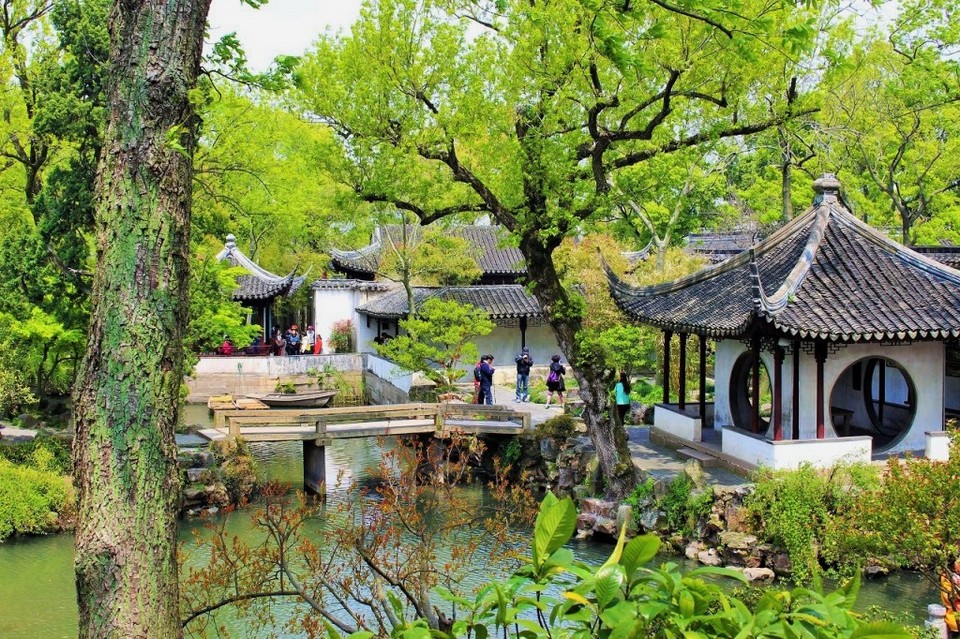
Once stepping inside the garden, you will feel like stepping into a dreamland in a quiet, tranquil space like what you often seen in Chinese historical movies. Legend has it that although it was designed in 1509, it spent a full boat of “silver” and 6 years to build up Zhuozheng Yuan. Thanks to the meticulousness and feats that have created a wonderful work bearing bold architectural style of the Ming Dynasty for later generations.
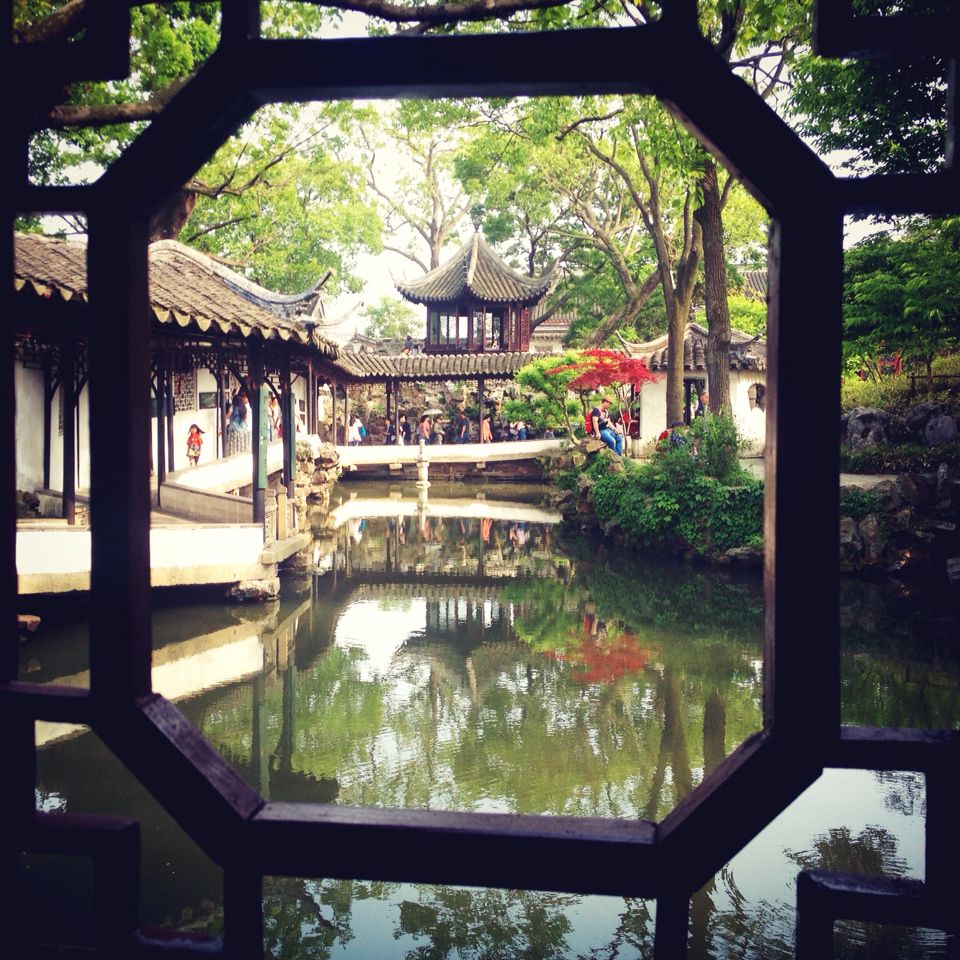
Humble Administrator’s Garden Ticket in Suzhou
Address: 178 Dongbei St, Gusu District, Suzhou, Jiangsu, China, 215001
Opening hours: 7:30AM – 5PM
Admission: 90 yuan – Buy tickets in advance here
Lion Forest Garden (Shi Zi Lin Yuan)
Shi Zi Lin Yuan is the filming location of the movie Journey to the West. Shi Zi Lin Yuan with unique and magical architecture is not only a treasure of Suzhou but also one of the most beautiful and large-scale classical gardens in China.

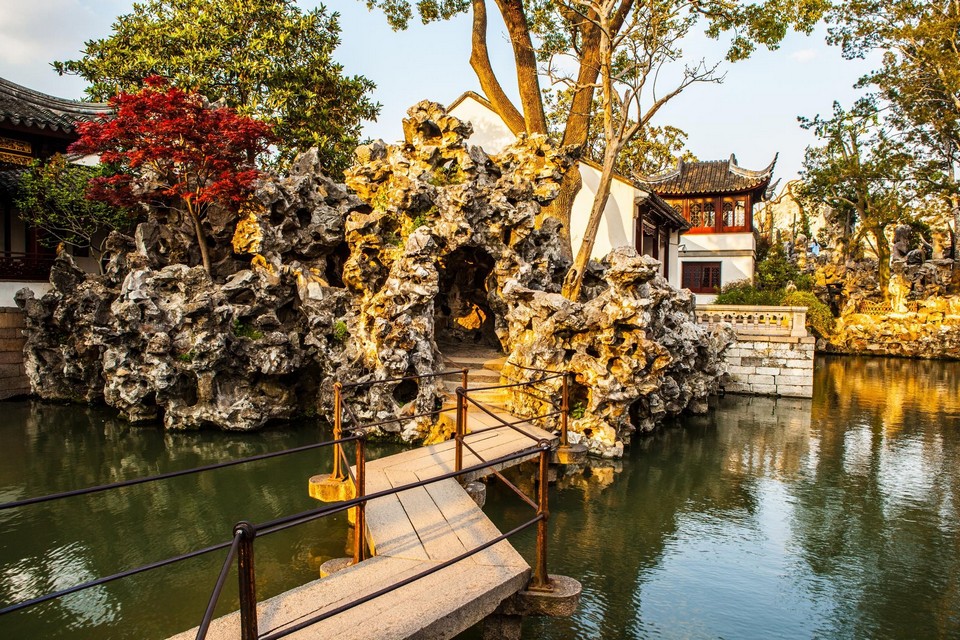
Shi Zi Lin Yuan is a traditional Chinese garden which was built in the northeast of Suzhou in the Yuan Dynasty, so it bearing bold architectural style of this dynasty. In the garden, the rocks were brought from Lake Taihu with countless strange and diverse shapes, stacked, which are very similar to a lion’s head at first glance, so this place is called Lion Grove Garden.
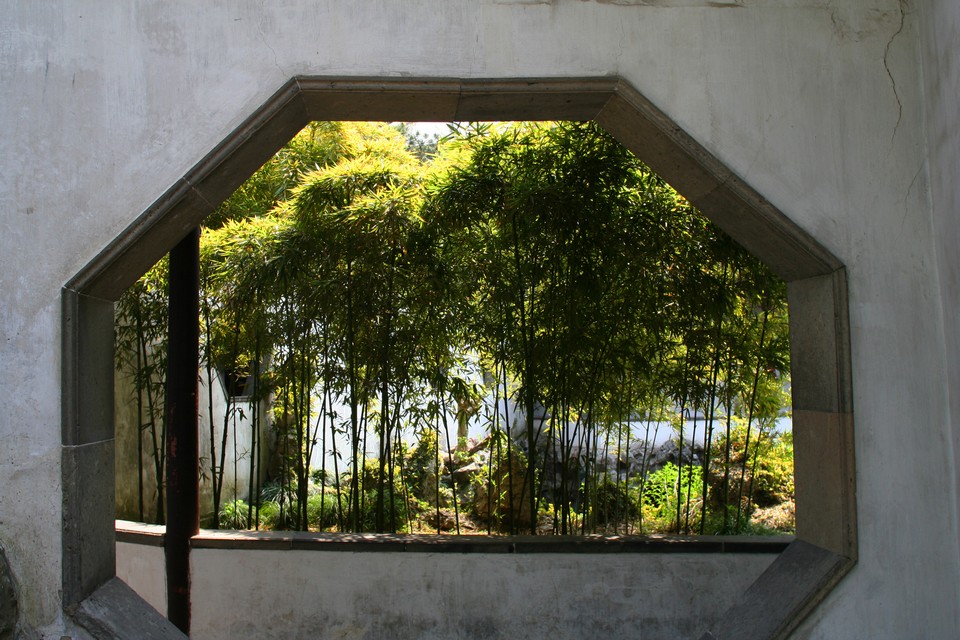
Lion Forest Garden Admission Ticket in Suzhou
In an area of 1.1 hectares, Shi Zi Lin Yuan is designed harmoniously between water and mountains, nature and people exchange and open up. The ancient and elegant beauty of Shi Zi Lin Yuan makes visitors always feel relaxed and peaceful while strolling around the garden.
Note: You should not visit Shi Zi Lin Yuan if you go with the elderly and children because the ways are zigzag, up and down as a maze, it’s hard to find the exit.
Address: Address: 23 Yuanlin Rd, Gusu District, Suzhou, Jiangsu, China
Opening hours: 7AM – 5PM
Admission: 40 yuan – Buy tickets in advance here
Lingering Garden (Liu Yuan)
With an area of 23,310 m², the Liu Yuan garden is divided into 4 areas which were designed according to different architecture style but are linked into a long corridor. This makes visitors feel like they are lost in a giant garden with endless natural scenery without stops.
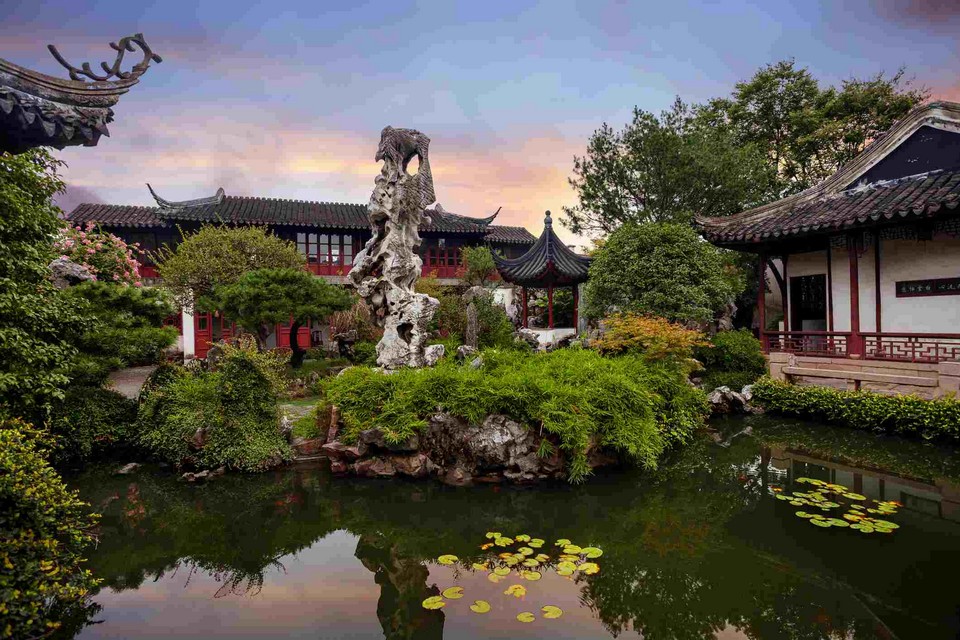
Lingering Garden Ticket in Suzhou
Address: 338 Liuyuan Rd, Gusu District, Suzhou, Jiangsu, China
Couple’s Retreat Garden (Ou Yuan)
Ou Yuan is also known as Suzhou classical style bonsai garden. This is a typical forest garden architecture in the citadel, taking the residential core in the middle as the main garden, this type of architecture dates back to the Spring and Autumn period (Chunqiu Shidai, 770-476 BC) in 514 BC. Ou Yuan garden is the convergence of the artistic quintessence of ancient Chinese garden style. Although simple but delicate, bringing the natural beauty and showing the outstanding skills of the ancient gardeners, it can be said that this garden represents the art of Chinese garden style.
Address: Gusu District, Suzhou, China
Suzhou Silk Museum
Suzhou is not only a famous tourist destination of China but also a famous silk production region. Suzhou Silk Museum is a tourist spot not to be missed if you want to learn about the silk of this land. The museum is a place to keep many documents about the silk production process of local people from ancient times with a history of more than 5000 years.
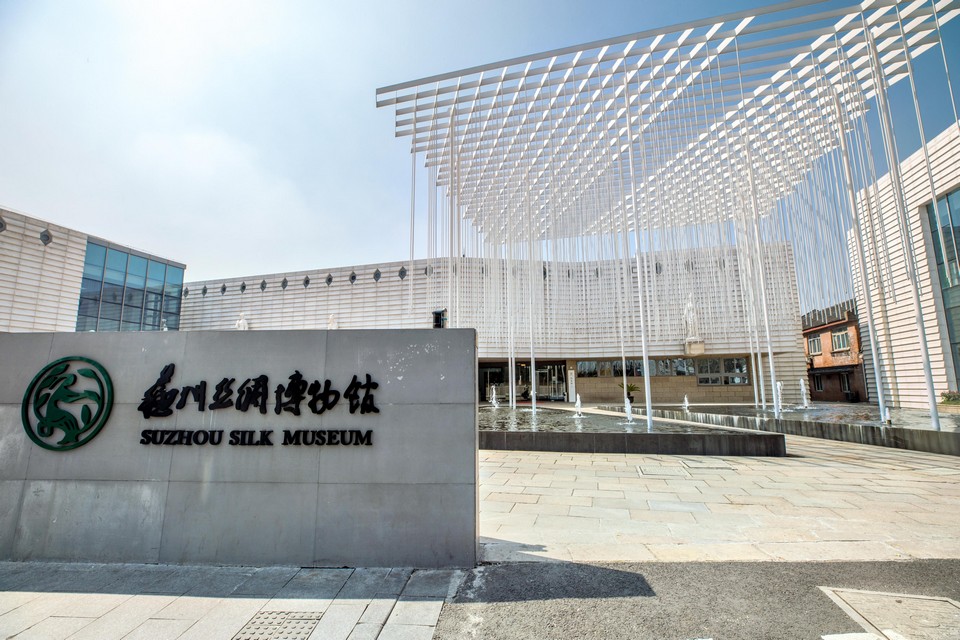
Tourists coming here can see the traditional looms, some ancient silk patterns and the proper mulberry growing process to produce the best silk in the world. It also displays a wide range of paintings, calligraphy and handicrafts from all over the country. Most of these artifacts date from the Song, Ming and Qing dynasties. Besides, the unique architecture of the museum also impresses tourists.
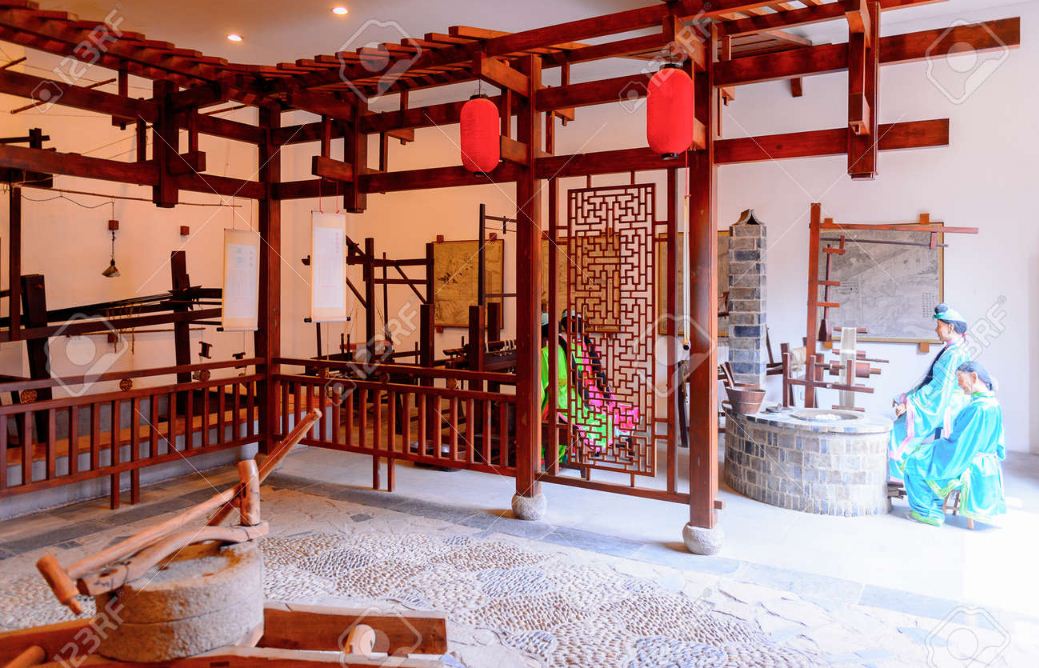
Address: 2001 Renmin Rd, Ping Jiang Qu, Suzhou, Jiangsu, China, 215001
Opening hours: 9AM – 5PM (closed on Mondays)
Ticket price: Free
Shantang Old Street
Shantang is a famous pedestrian street in Suzhou and is a gathering place for tourists. It’s always bustling especially at night, a must-visit place in Suzhou. Along the street are souvenir shops, restaurants, food stalls and inns lying close together, all creating town’s ancient atmosphere.
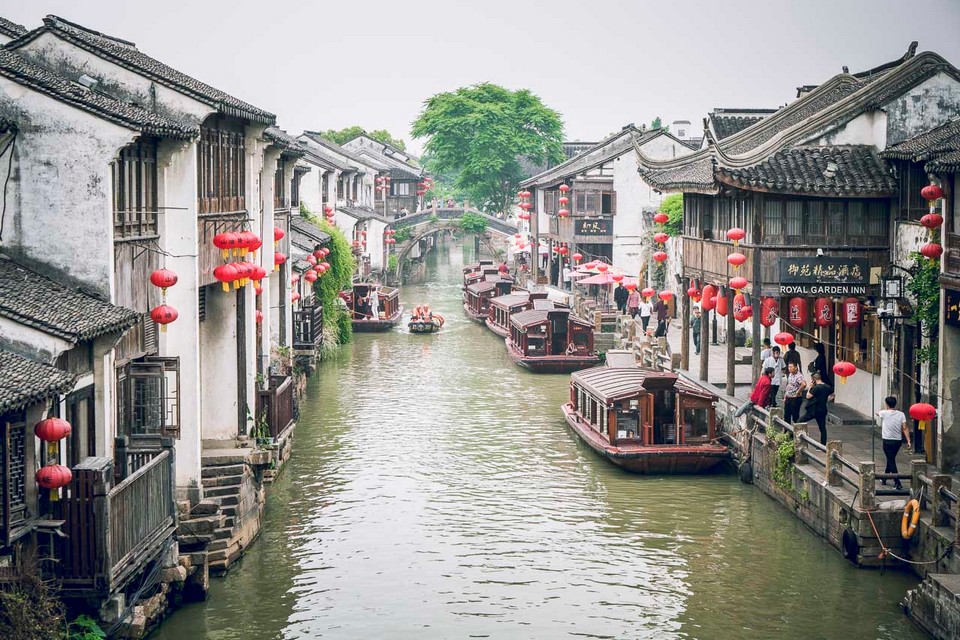
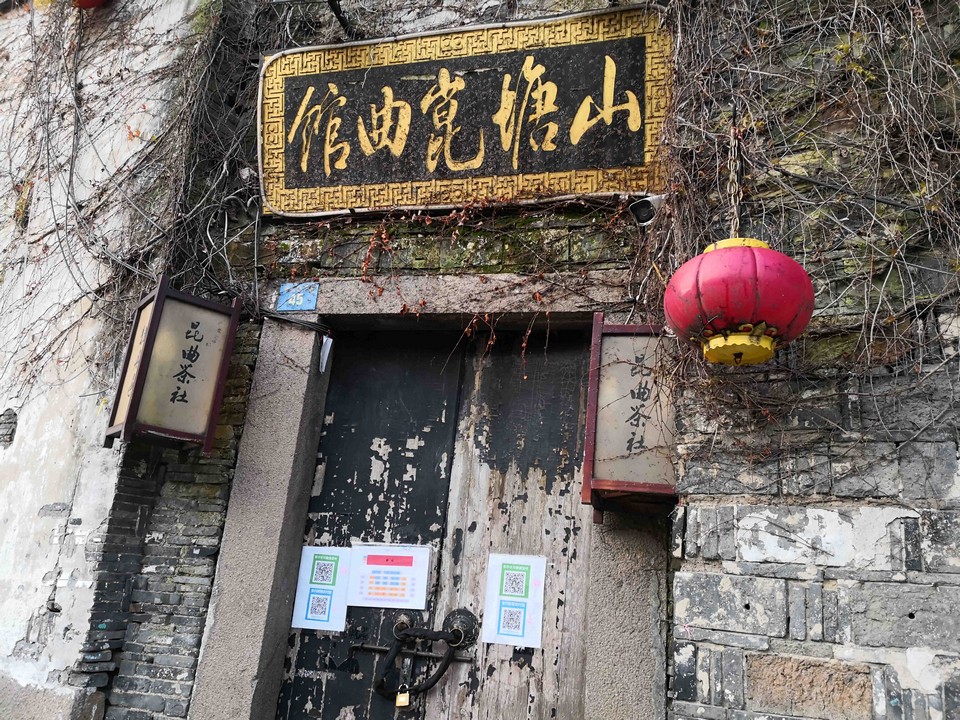
Tip: Do not come here on the weekends because there are extremely crowded with tourists, 1 square meter is “hundreds of people”, even you will hard to find a spot to stand.
Oriental Arc Building
Oriental Arc (The Gate to the East) is the tallest building in Suzhou with a height of over 300m with 66-storey. This building built in gate-shaped, symbolizing the gateway to bring the quintessence of the land of Suzhou to the world. But if you look longer you will see that this building is more like a pair of pants than a gate.
There are many spots to see the panorama of this architecture, but the closest one is right at the park opposite, the Suzhou Industrial Park. If you want to know what the scene will look like, you can check out the photo below.
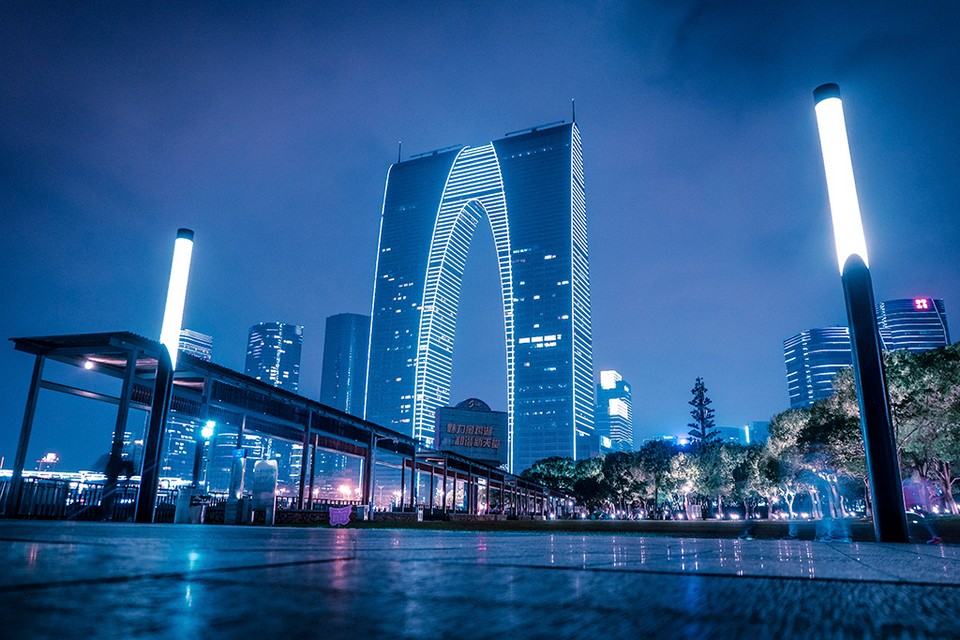
Hanshan Temple (Hanshan Si)
Suzhou is a land where Buddhism thrives and long-standing with very famous temples and pagodas but the most famous is Hanshan Si Temple. The temple was built in the early 6th century under the dynasty of the Emperor Wu of Liang.
The temple has an area of about 10,600 square meters, located in the west of Fengqiao District, about 5km from the center of Suzhou. The most known mural is Hanshan carved in stone by the painter La Sinh So who lived in the Qing dynasty, the famous calligraphy of Truong Xu Lieu is also now kept here. In addition, Hanshan Temple is also famous for the statues of Buddha, the Eighteen Arhats… and stone steles recording poems and great poets.
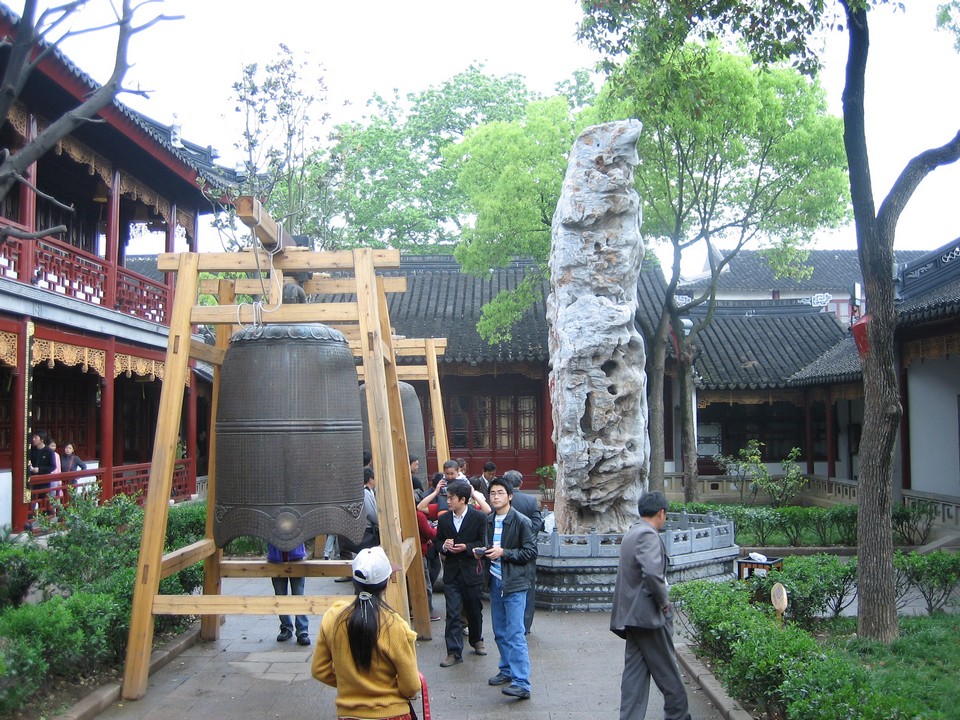
Address: China, Jiangsu, Suzhou, 金阊区寒山寺弄24号
Wuxi Film Studios
If you plan to stay in Suzhou more than a day, you can visit here. This is one of the familiar locations for cheap China tours and also on the Suzhou travel guide brochures. The historical movie Three Kingdoms and many other legendary historical films about the mighty China of the past were all filmed here. Visitors will see firsthand the battle boat models that recreate the battle flood and landslide called Chibi (the Battle of Chibi), enjoy the fascinating traditional peking opera on the river, horse riding, wear armor, disguised as characters in the epic movies, experience spirit of the warriors in ancient times.
Address: China, Jiangsu, Wuxi, 南长区 Renmin W Rd, 45号金惠大厦13层1306
Suzhou travel blog: What to shop?
Biluochun
It is a famous Chinese tea grown in Dongting mountain, Lake Taihu, Suzhou province. This type of tea when sipping for the first time, it has a light color and a fresh aroma. At the second drink, it has green color, fragrant while the third drink, it has emerald color and the aroma is strong and sweet.

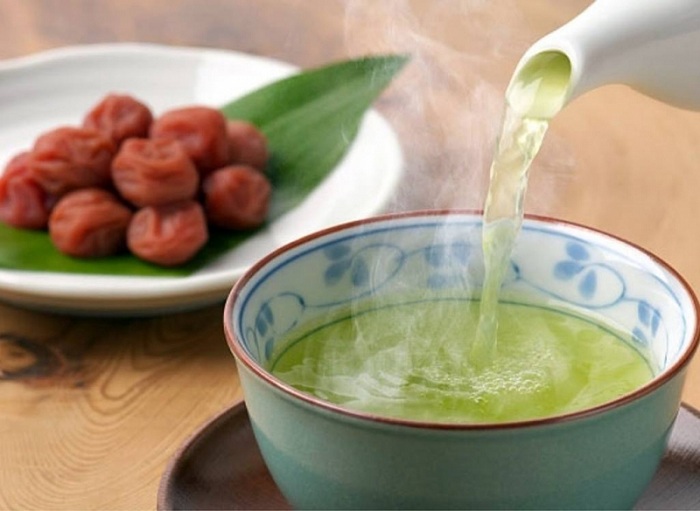
Silk
Weaving and embroidery products are very famous in Suzhou as well as the world, you can choose these products as gifts for friends and relatives.
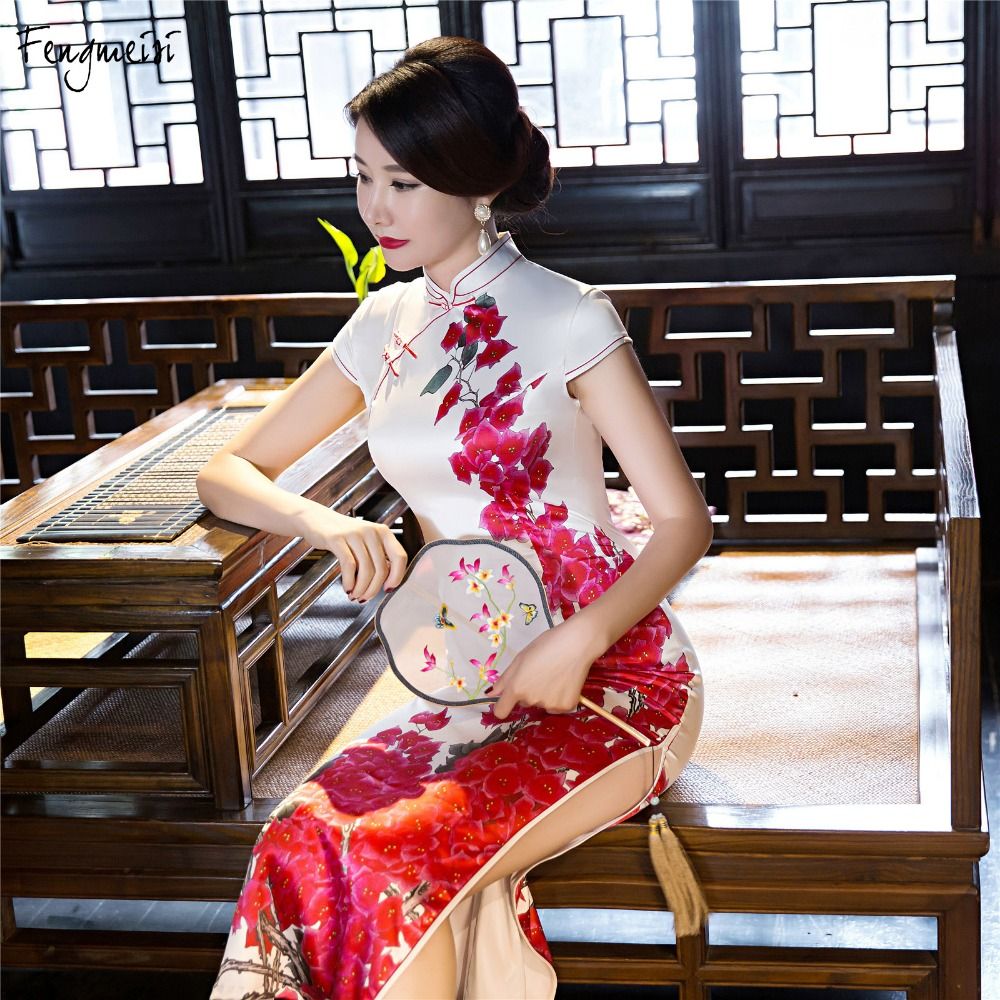
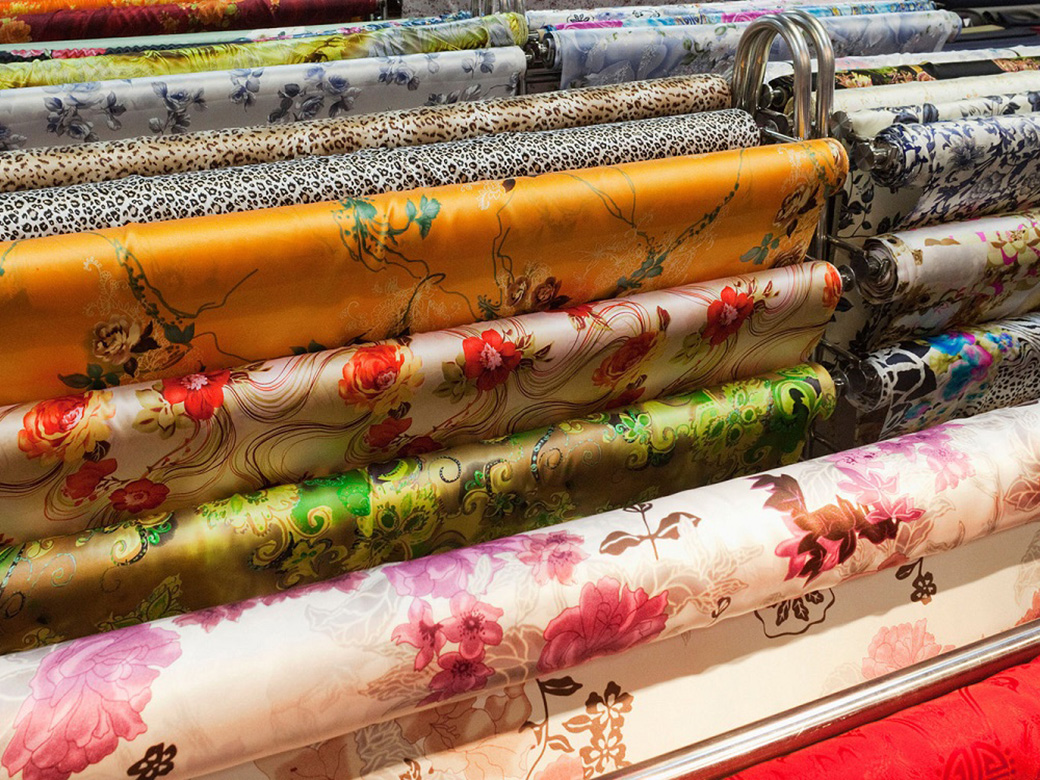
Guanqian Street is a famous shopping street, it has everything from shopping, cuisine, sightseeing to tourism services. Here, you can choose from a full range of items as gifts, especially the famous traditional products in Suzhou such as tea, silk.
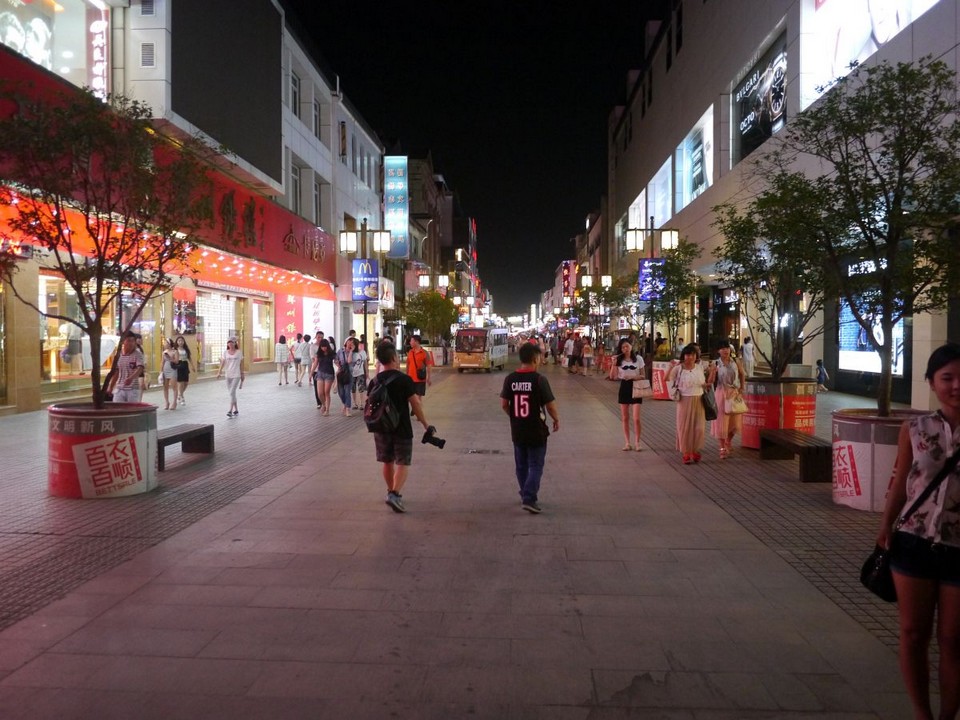
Suzhou blog: What to eat and where to eat?
Traveling to Suzhou, in addition to being able to admire the beautiful scenes like in Chinese historical movies, you will also be fascinated by the quintessential dishes of the people here. Although it’s not as rich as its neighbor Hangzhou, Suzhou cuisine is enough to make visitors remember forever. Many kinds of meat, sesame cakes are very delectable, but you only have to pay less than 5 yuan to have a rustic breakfast, or bring it as a reserve food for a long day of discovery. I will introduce some typical dishes you should try in Suzhou below.
Steamed Taihu Lake Fish
Although the steamed fish dish is easy to prepare and can be found anywhere, but only fish in Taihu Lake has a characteristic sweet taste. The tender and chewy fish meat is steamed with soy sauce to create a delicious taste that is irresistible.
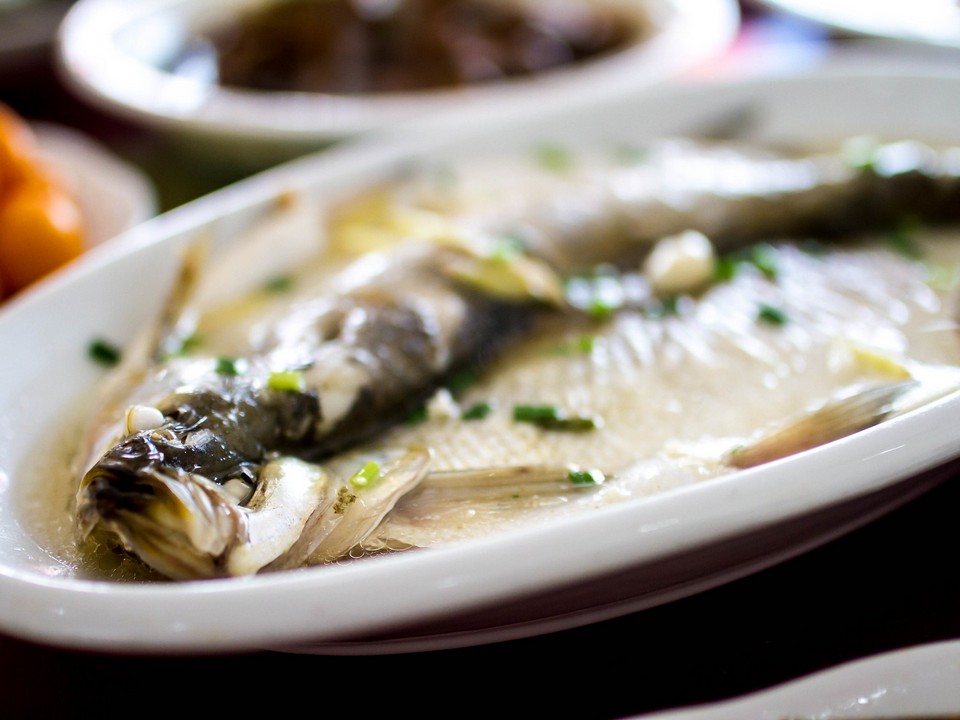
Fried fish
This is a delicately processed dish, fish will be nicked, battered and fried. This is favorite dish by Emperor Qianlong and most restaurants in Suzhou serve this dish. Fish after deep-fried will look like a squirrel-shaped, and be poured with sweet and sour sauce.
Stewed goat
In addition to the popular dishes, my Chinese friend also introduced to me the stewed goat dish. This dish is served in a large bowl and will be served with naan bread.
Wansan Braised Pig’s Trotters
The dish sold with some other parts of the pig which are stewed according to a secret recipe, but for tastier, it is still pig trotters. Enjoying the fatty skin with the sweet and tender meat inside is hard to describe the flavor of this dish. A must-try food in Suzhou.
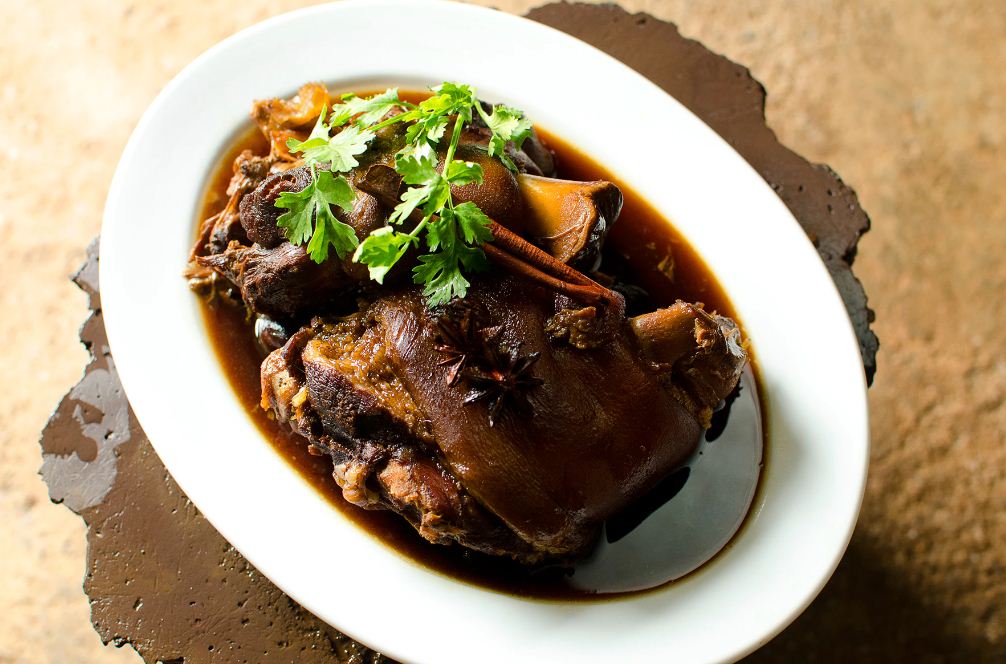
Noodles
In addition, there is a very special noodle called The Red Soup Noodle which made in a Suzhou style is also very popular.

Suzhou Pork Mooncake
Suzhou is famous for its unique pork moon cake specialty. It has a thin shell, the cake is sweet and fatty, so you shoul only eat about 1-2 cakes is enough to avoid getting greasy.
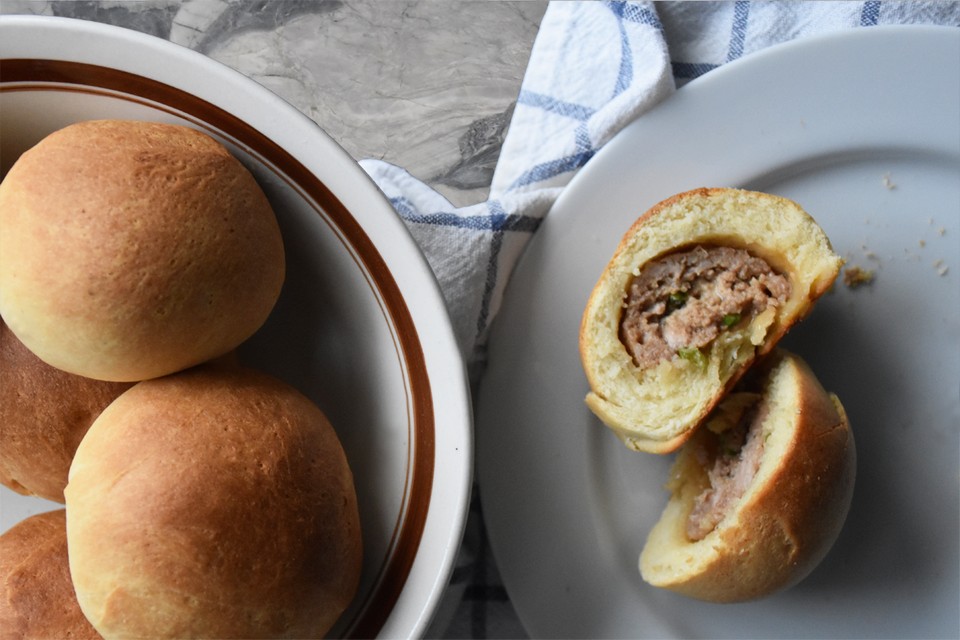
There are also many more snacks, desserts and other specialties such as: Chinese pizza, Dumplings, The Red Date Paste Cake, Red Bean Glutinous Rice Ball, Sugar Porridge, The Fermented Rice Cake, The Suzhou Small Wontons… You can find them in Shantang Street and street food vendors.
Suzhou blog: Suggested Suzhou itinerary for 2 days
How to spend 2 days in Suzhou? Here is my suggested Suzhou 2-day itinerary for you refer to.
Day 1
8:30AM – 11AM: Traveling from Shanghai to Suzhou
11:30: Lunch
12PM – 1PM: Suzhou Silk Museum
1PM – 2:30PM: Humble Administrator’s Garden
3PM: Back to the hotel to rest
6:30PM – 7:30: Dinner
8PM – 9PM: Oriental Arc Building
Day 2
10AM: Check out hotel
10:30AM – 11:30AM: Lunch
12PM – 1PM: Lion Grove Garden
2PM – 4PM: Shantang Walking Street
4:30PM: Going back to Shanghai
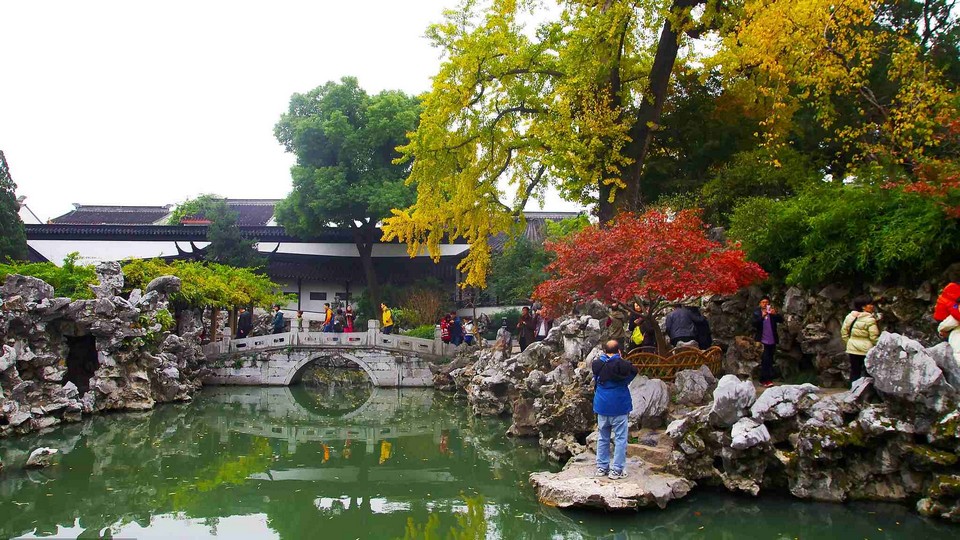
Suzhou travel blog: The trip cost
In general, the cost of traveling to Suzhou is quite affordable, including going back during the day or staying 1 night like us.
In the cost listing below, I did not list the traveling cost from Shanghai to Suzhou and vice versa, because I travel by my friend’s private car.
- Traveling: Taxi for 20 yuan
- Accommodation: 1 night for 156 yuan
- Admissions: Humble Administrator’s Garden ticket for 90 yuan (Buy at the ticket counter or buy in advance here) / Lion Forest Garden ticket for 40 yuan (Buy at the ticket counter or buy in advance here)
- Food and drink: Cost for 2 days: 150 yuan
TOTAL: CNY456 ~ $70.89
Suzhou blog: Before you go
- Download and install in advance the necessary applications to support your China travel such as: Baidu Maps, Dianping, Didi, WeChat, Alipay, Google Translate (offline version, becaue Google has been blocked in China) …
- Very few Chinese people can speak English, if you do not know Chinese, you can use Google Translate or learn some common Chinese words or sentences.
Suzhou China travel guide: Some best day tours, trips, activities and transfer services, tickets in, from and to Suzhou you can refer to
- Humble Administrator’s Garden Ticket in Suzhou
- Lion Forest Garden Admission Ticket in Suzhou
- Lingering Garden Ticket in Suzhou
- Tongli Ancient Town Ticket in Suzhou (For Mainland China ID Holders)
- Tongli Water Town Admission Ticket in Suzhou
- Tianping Mountain Ticket in Suzhou
- Master of Nets Garden Admission Ticket in Suzhou
- Suzhou & Zhouzhuang Water Village
- Suzhou Highlights Half Day Biking Tour
Are you looking for more top things to do in Suzhou: Tours, activities, attractions and other things? Let’s check it out here. And China here.

































